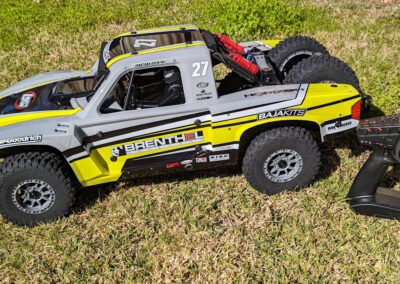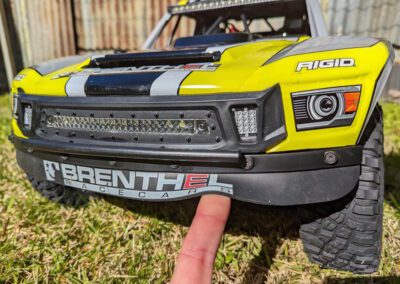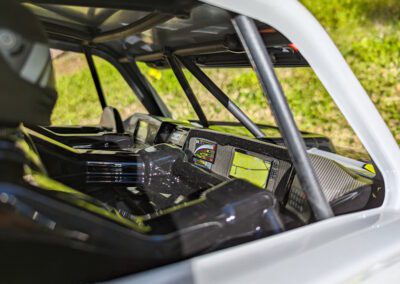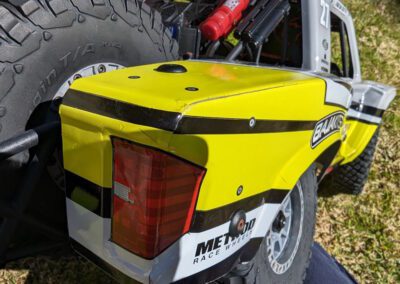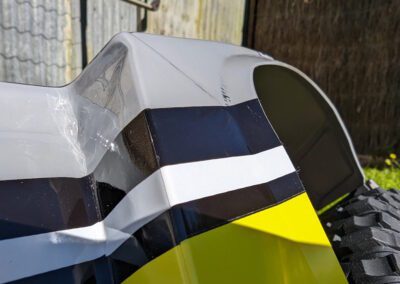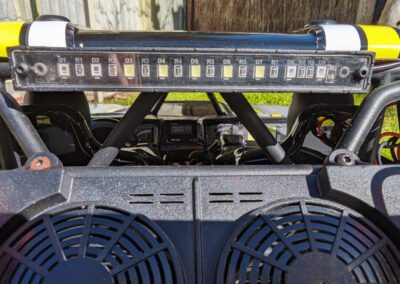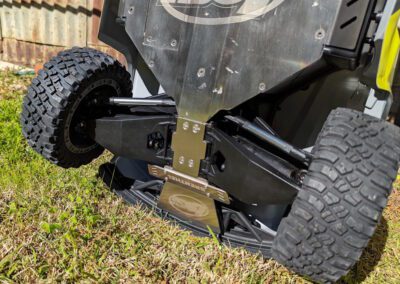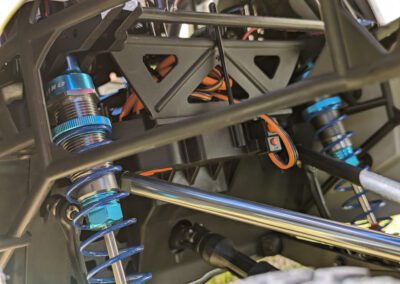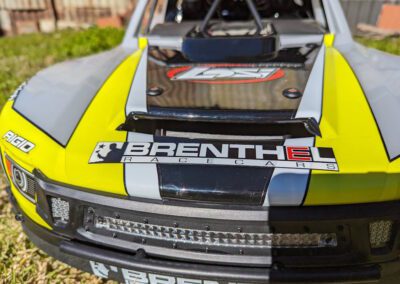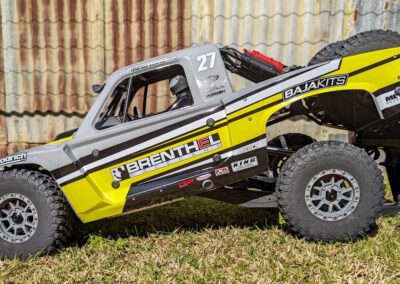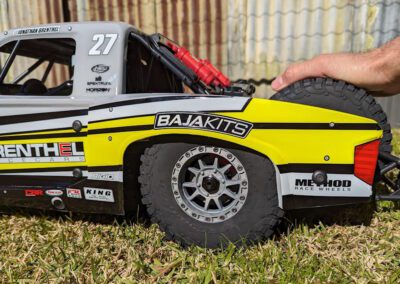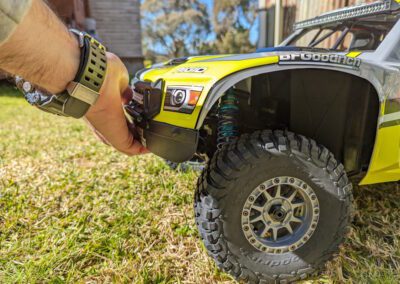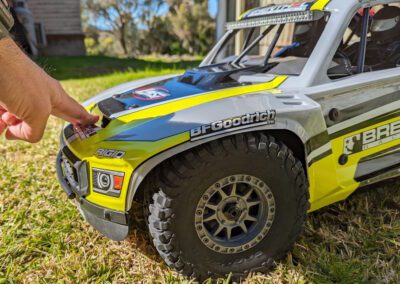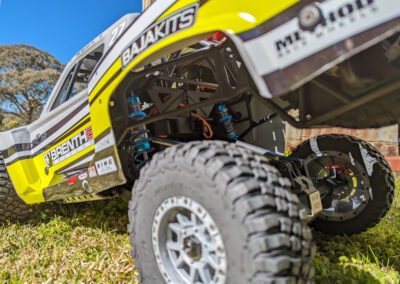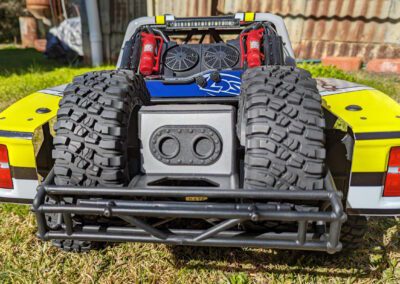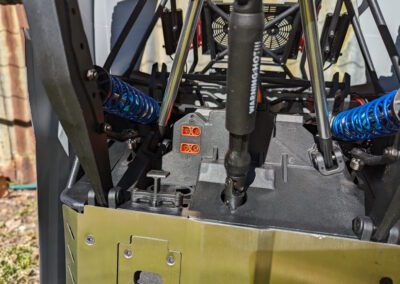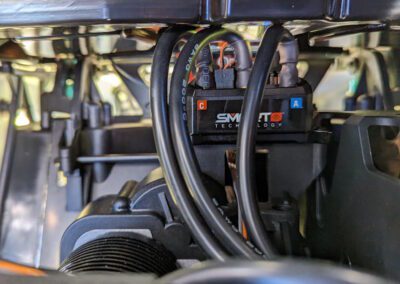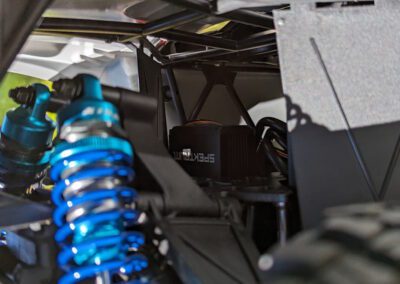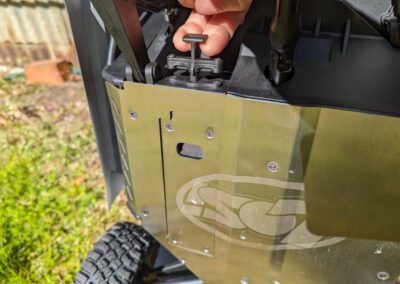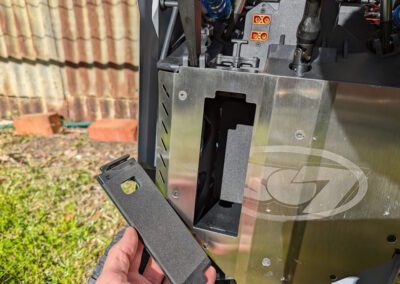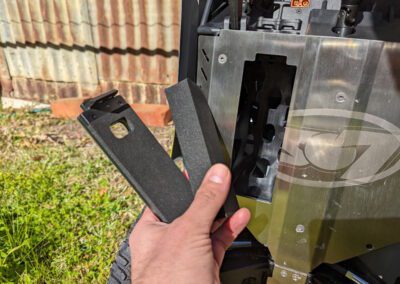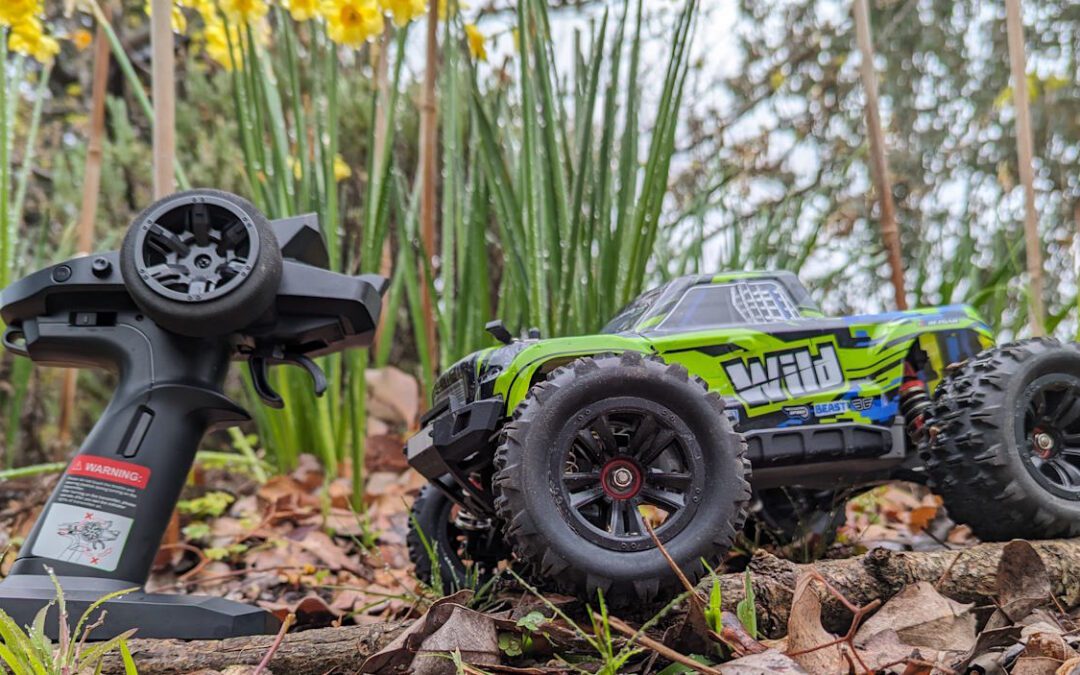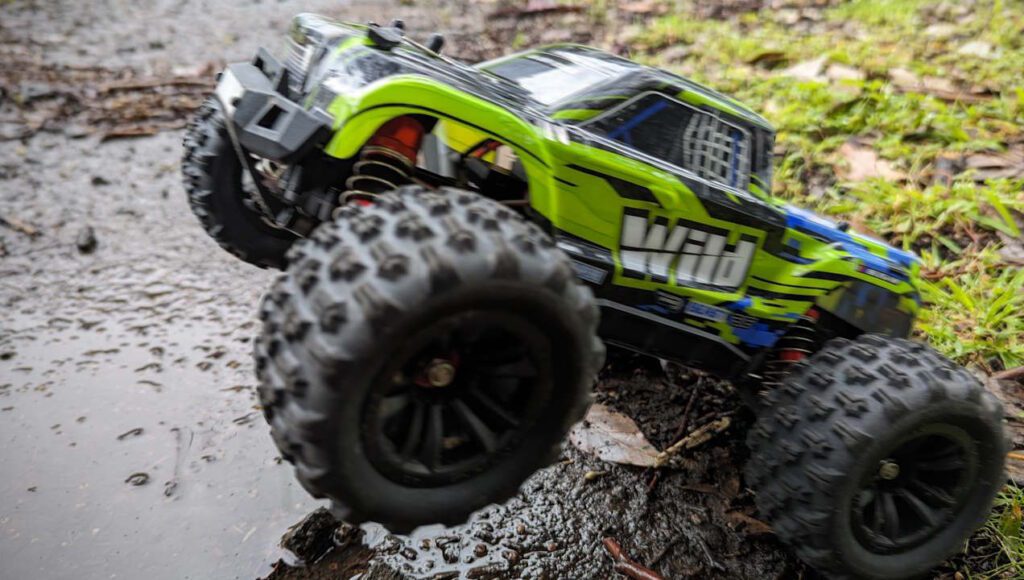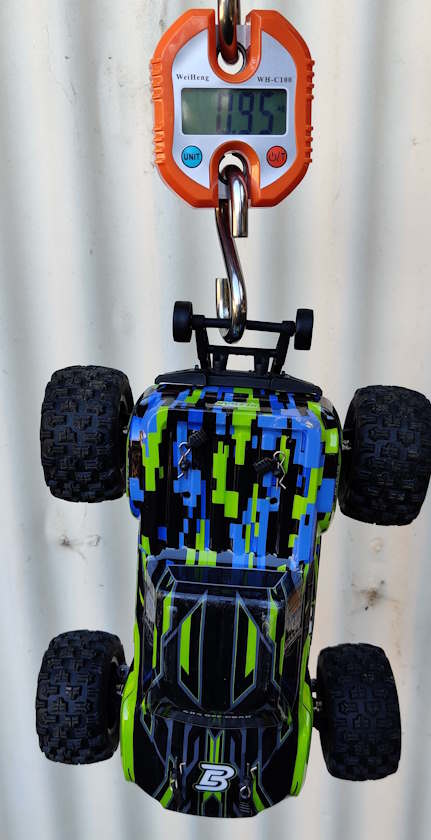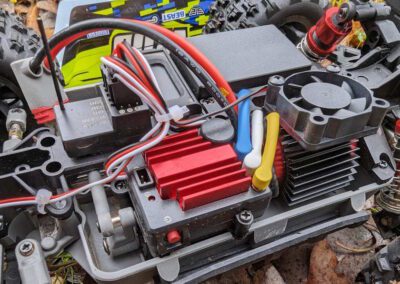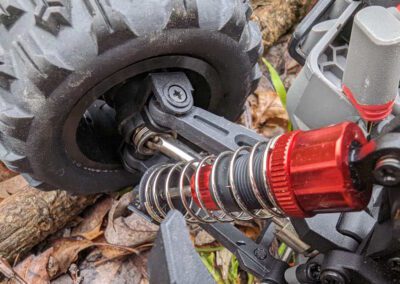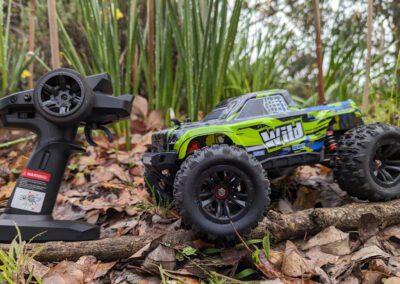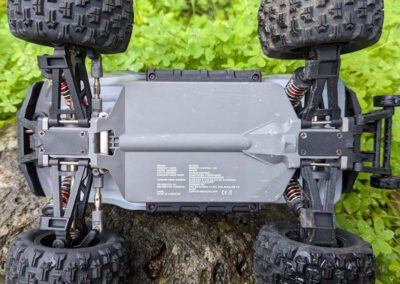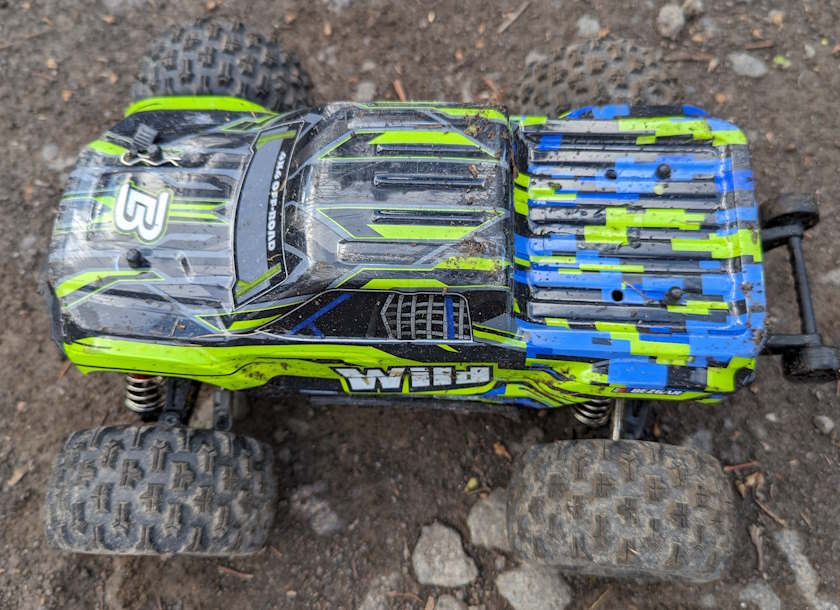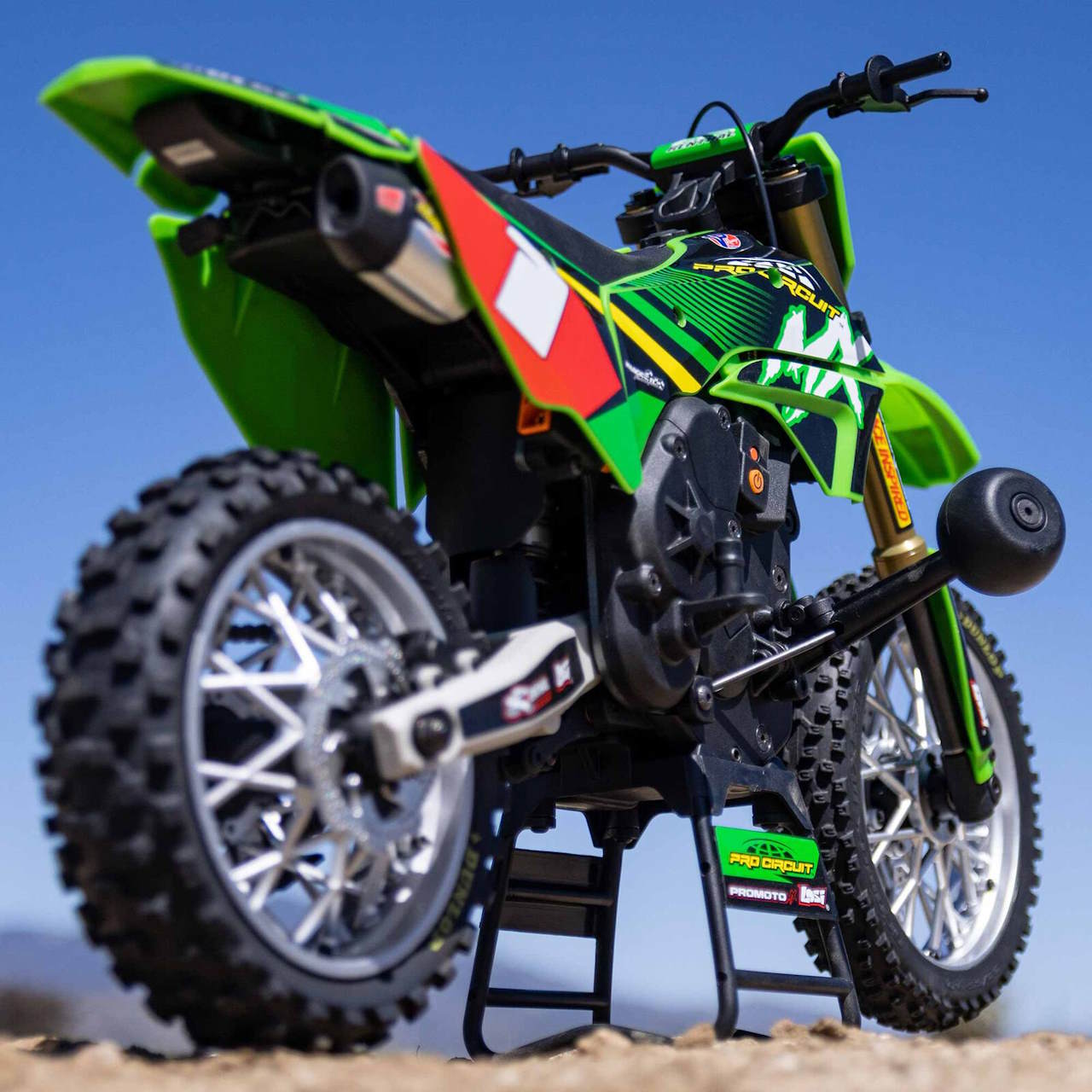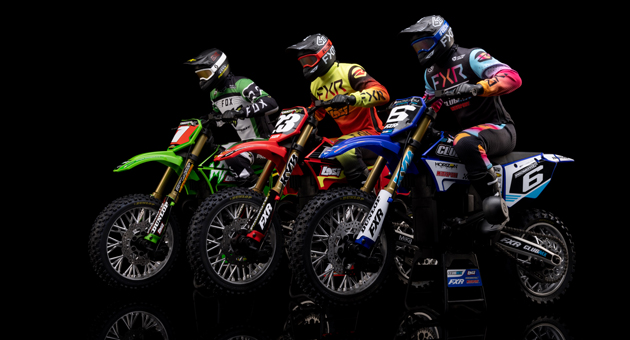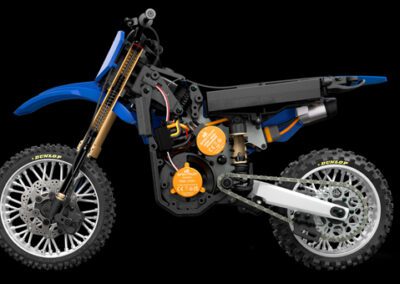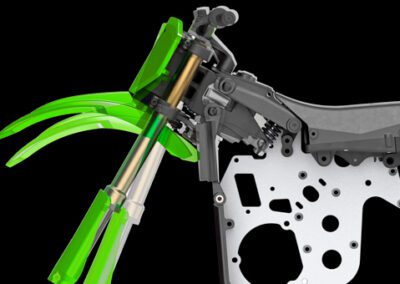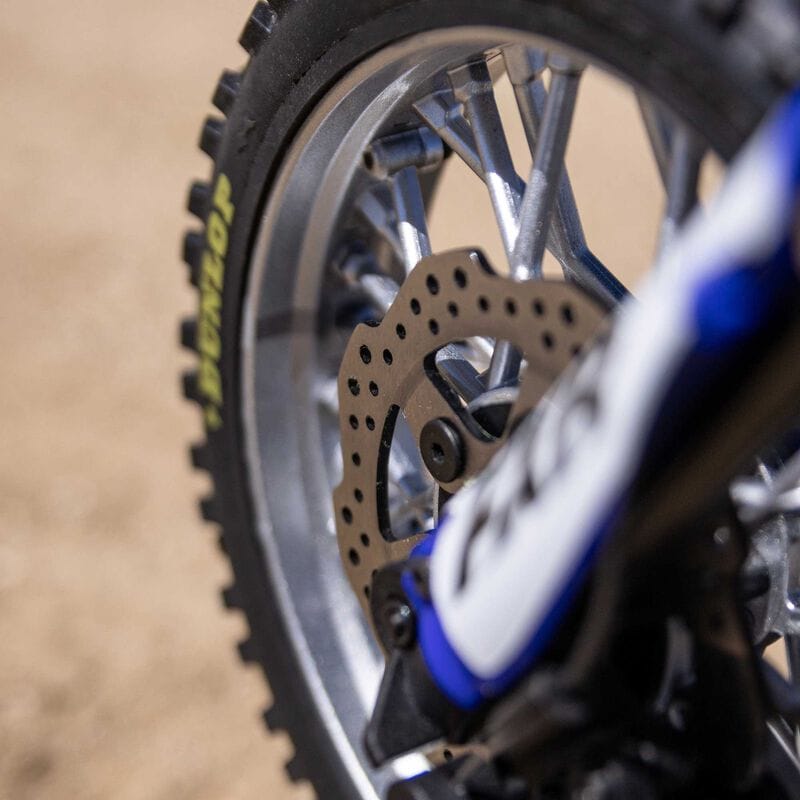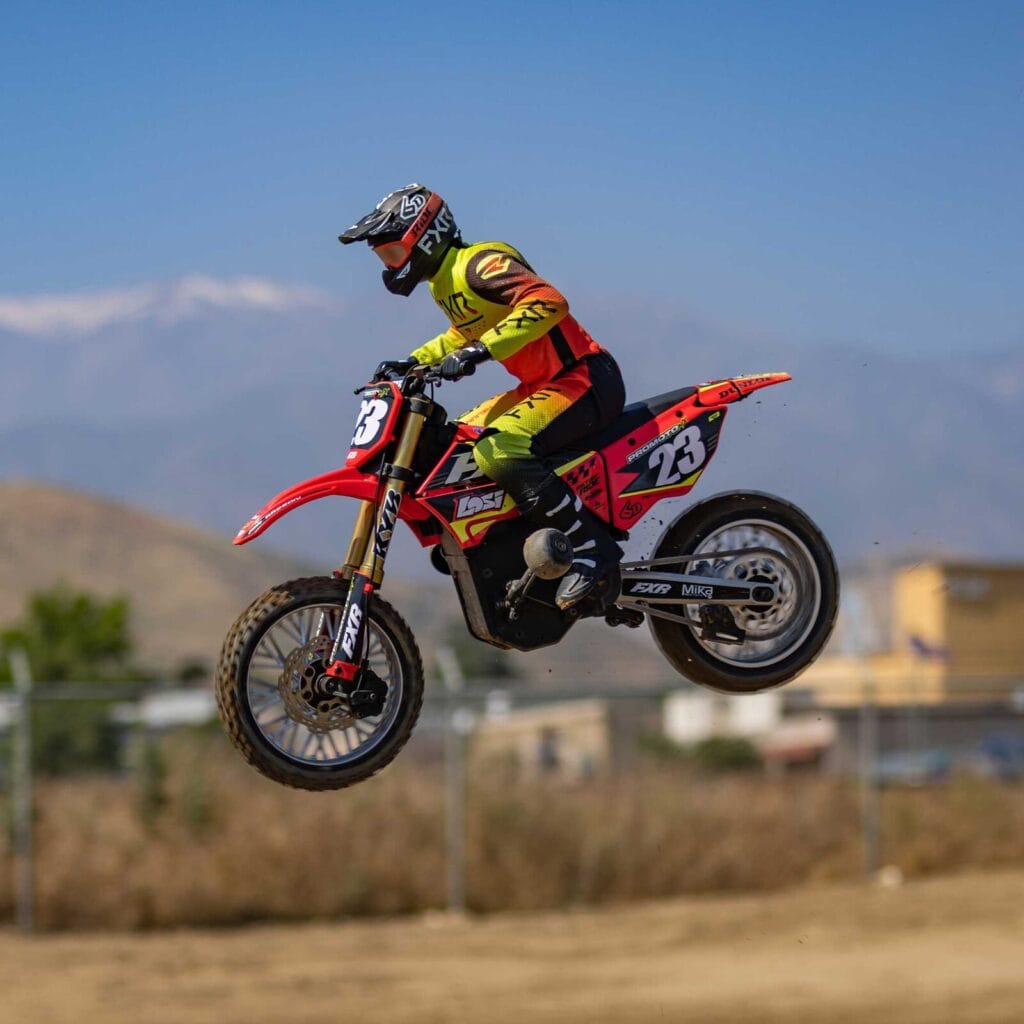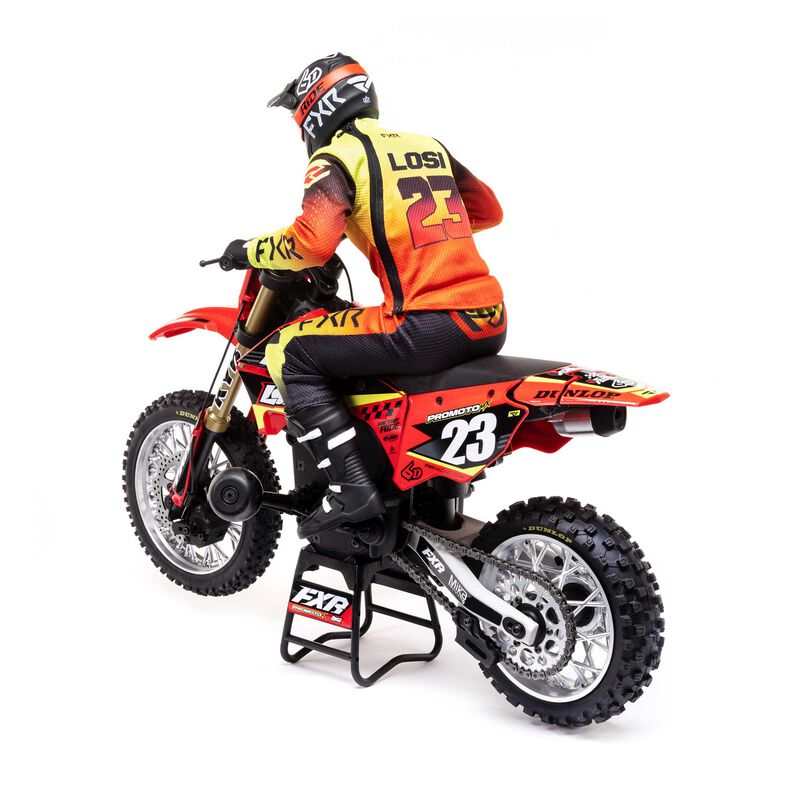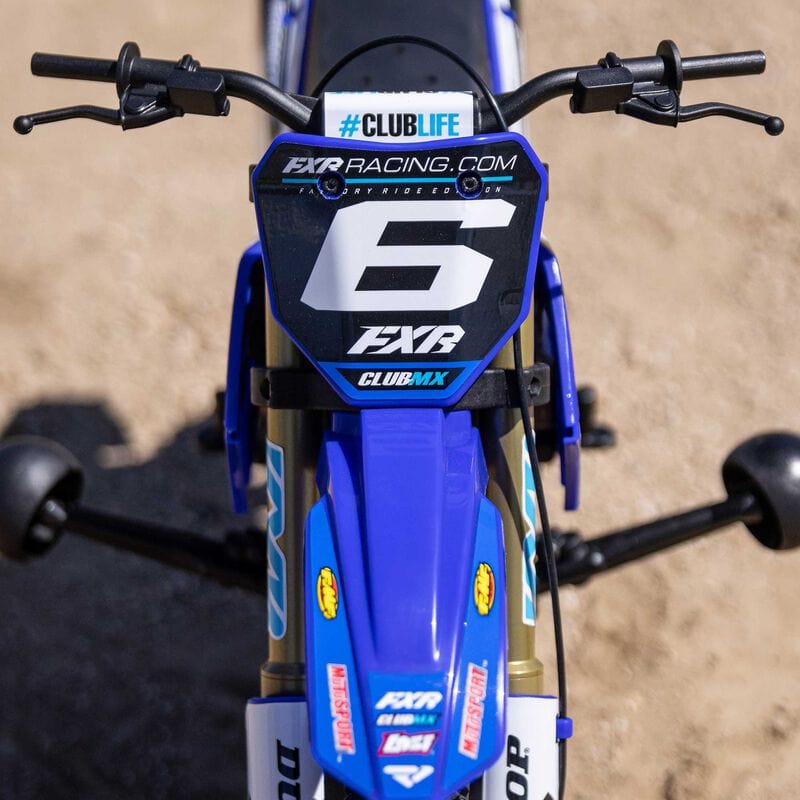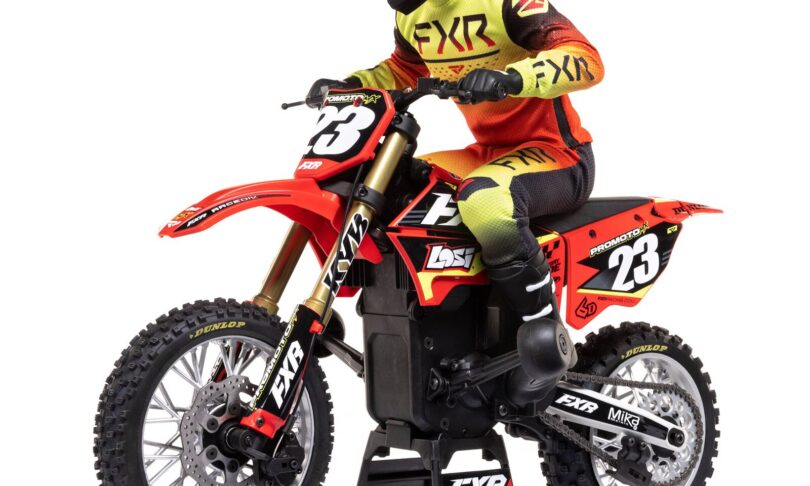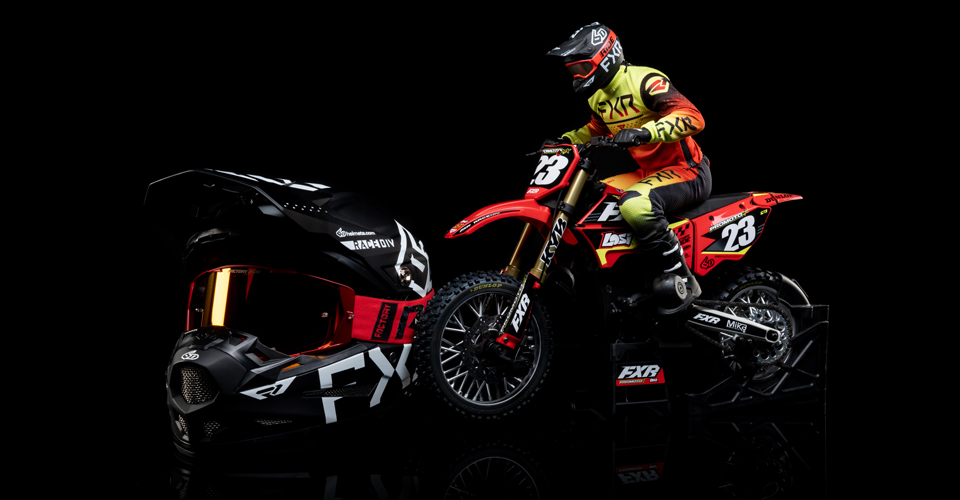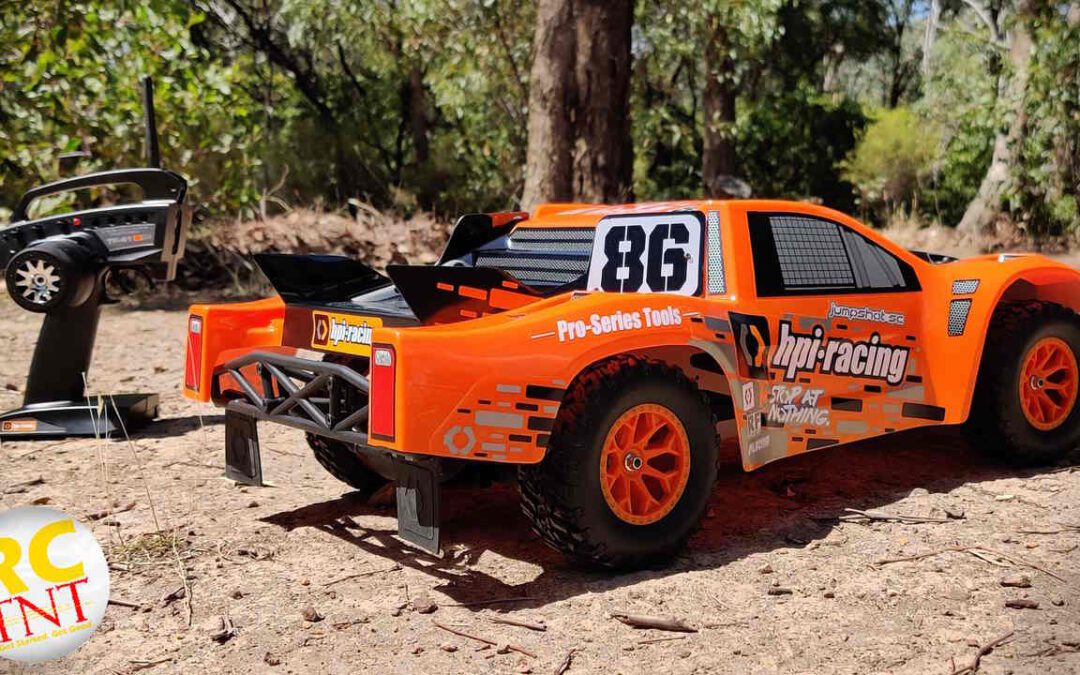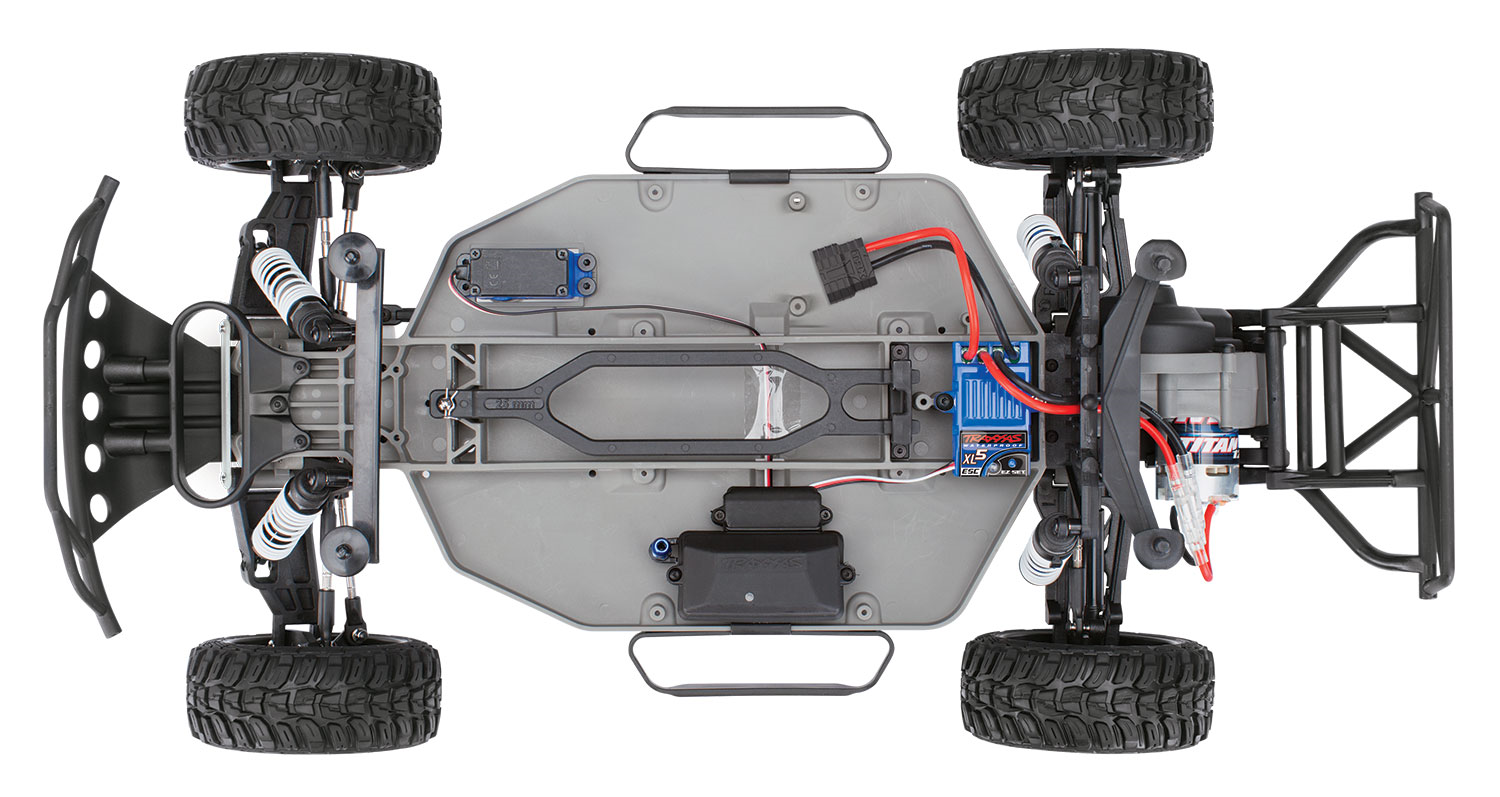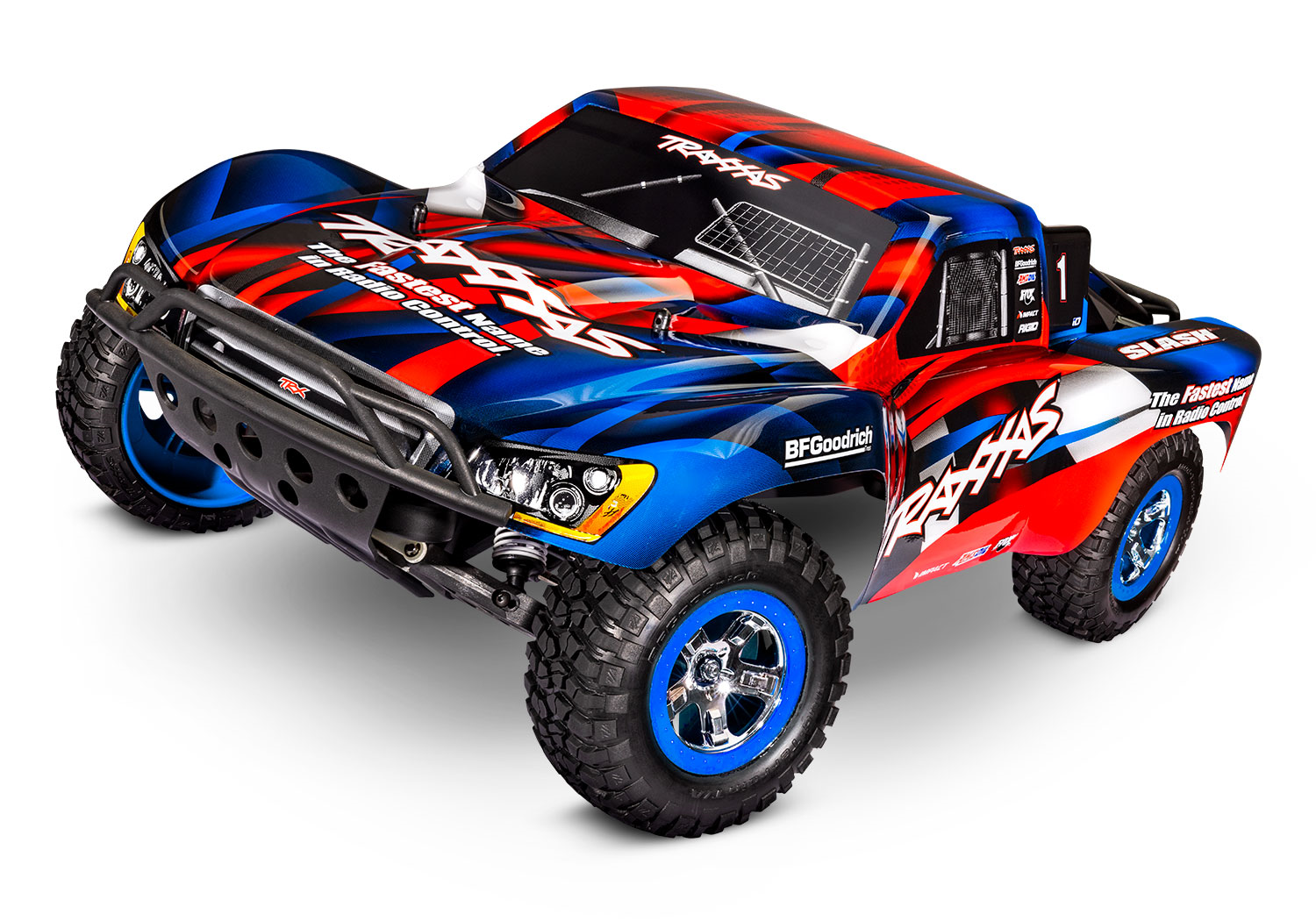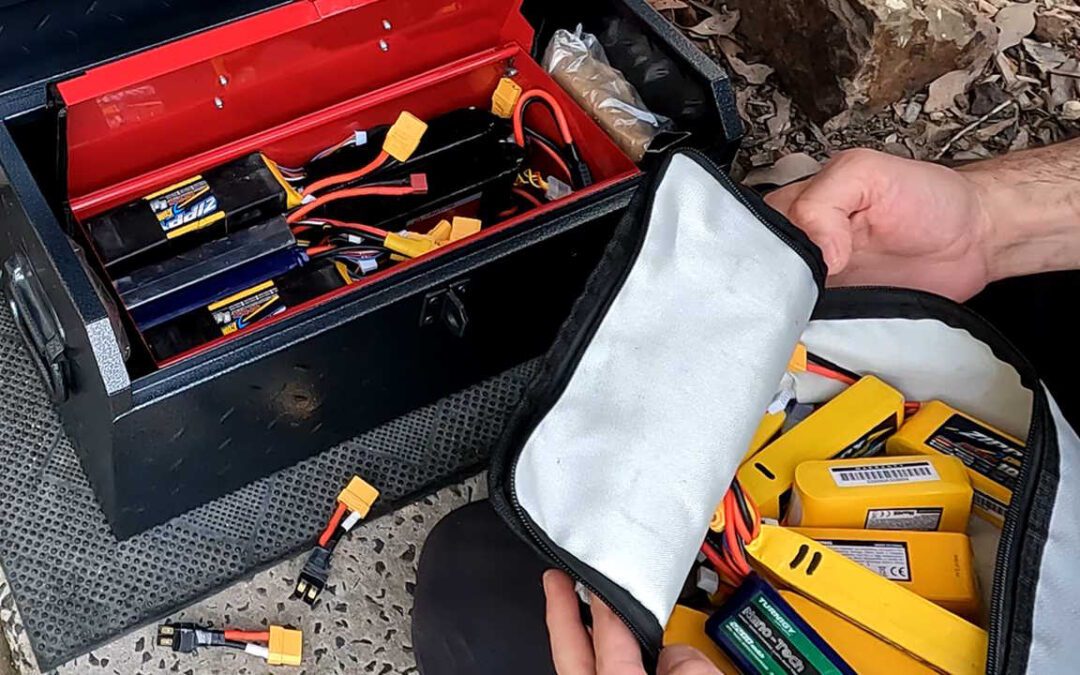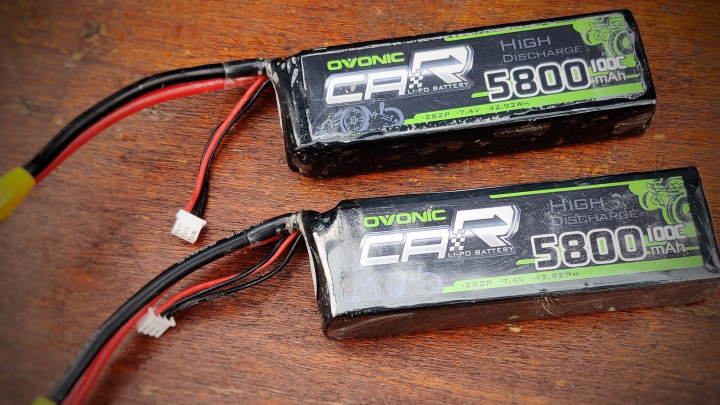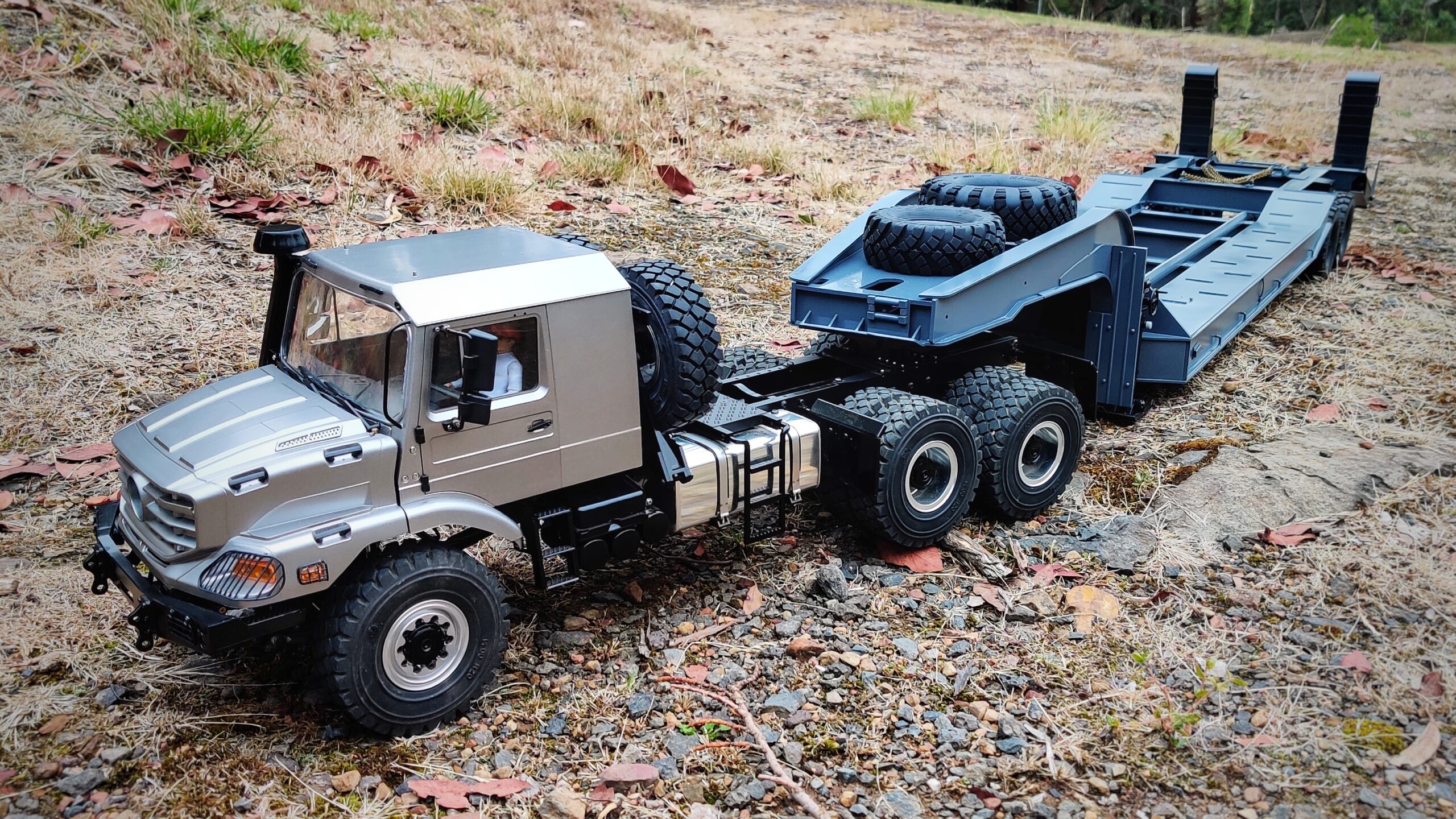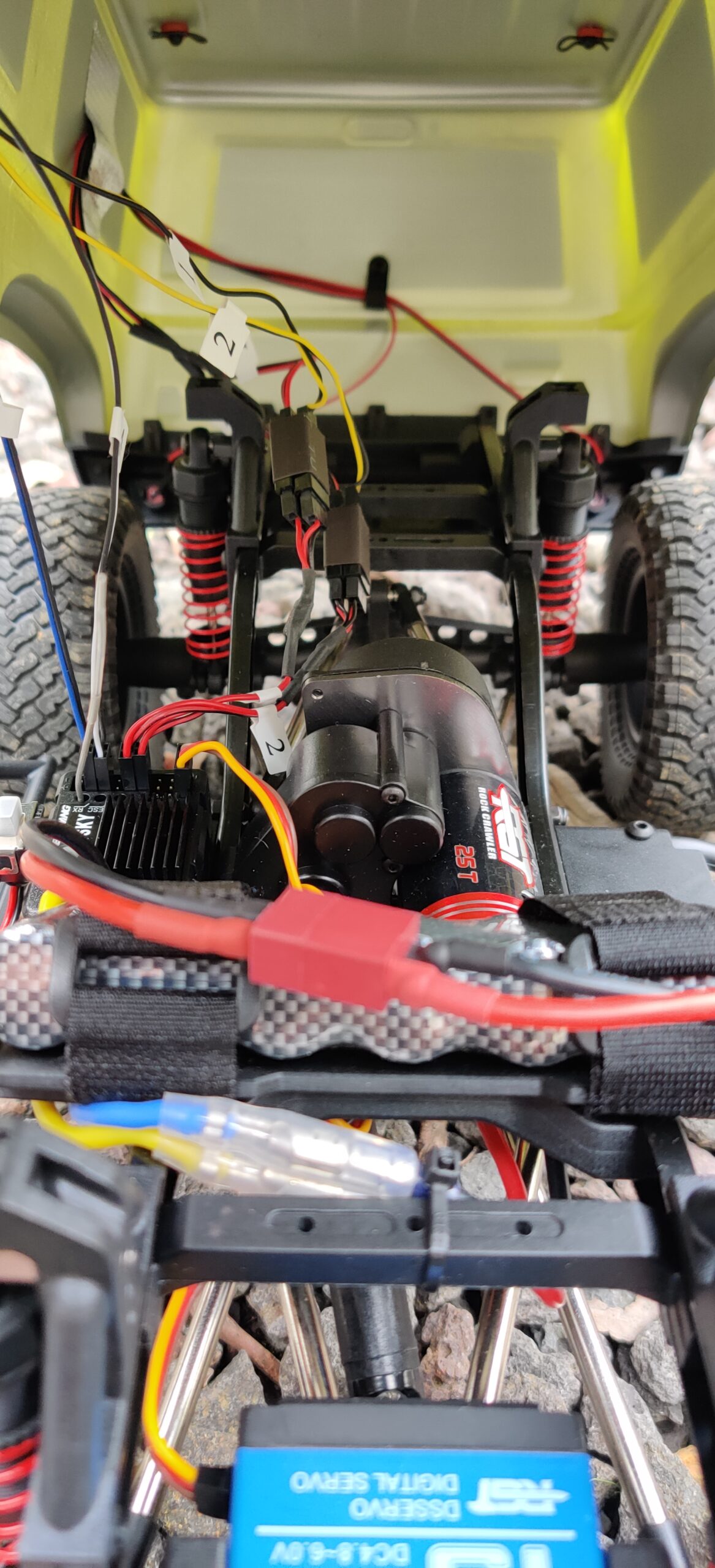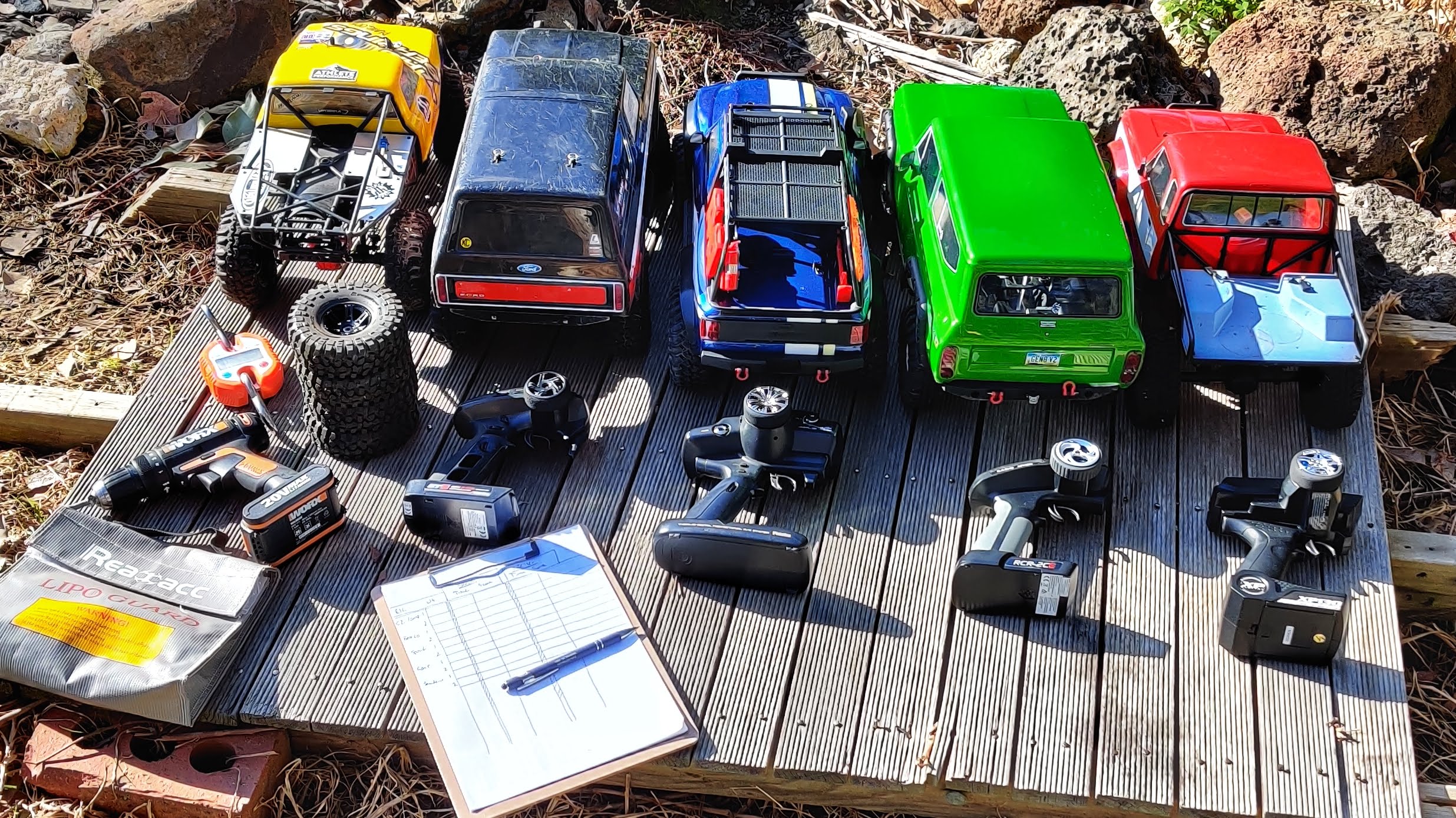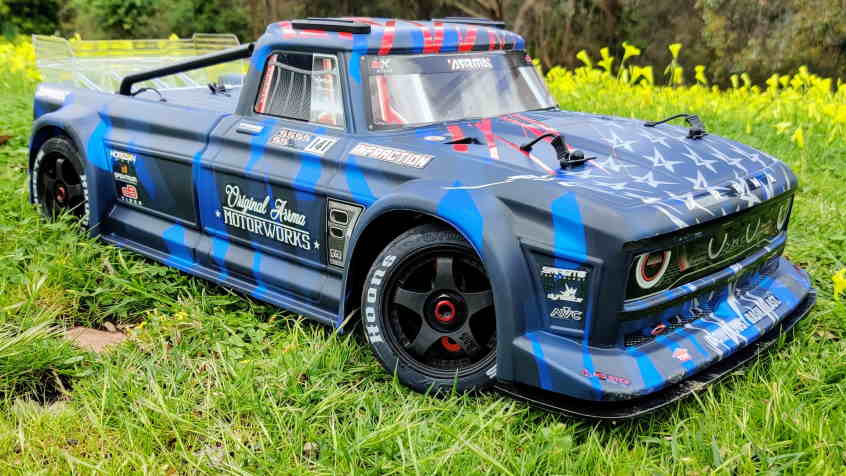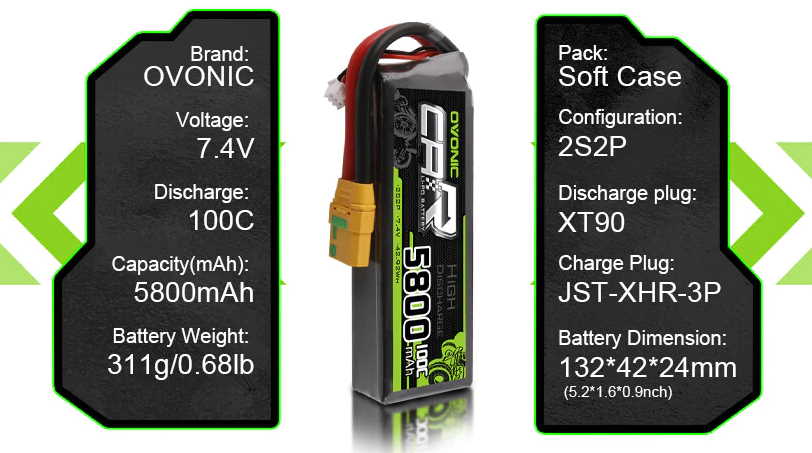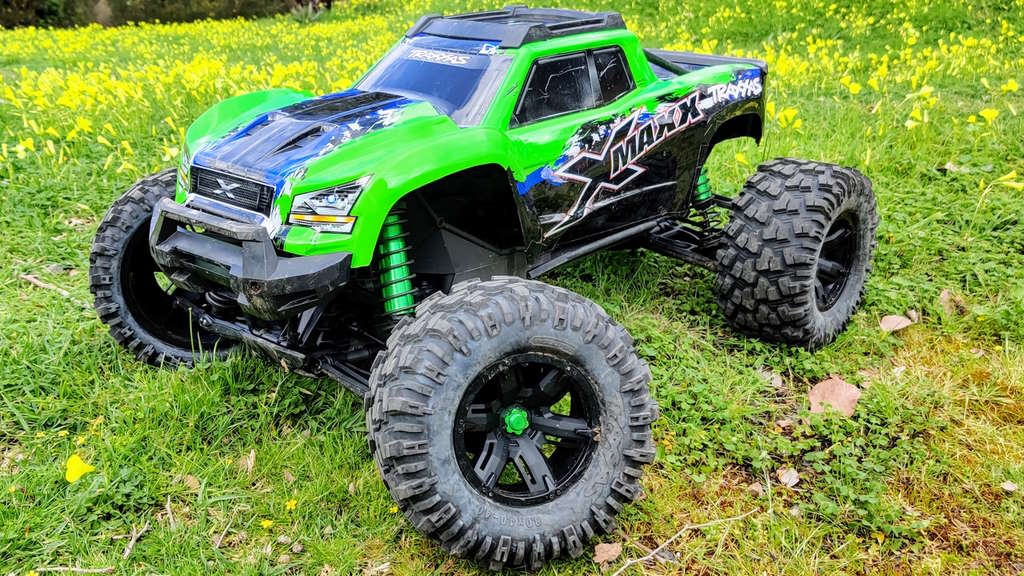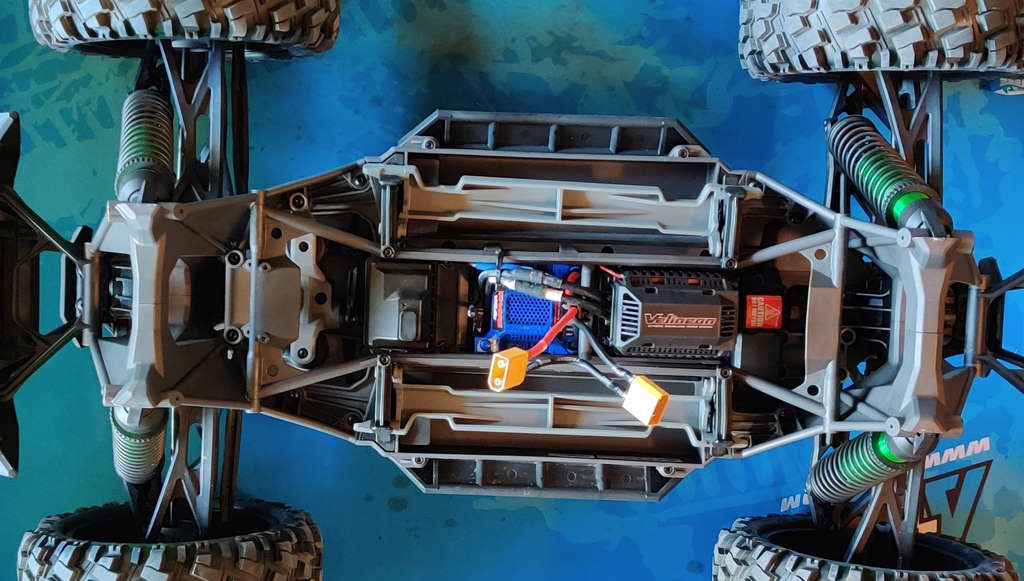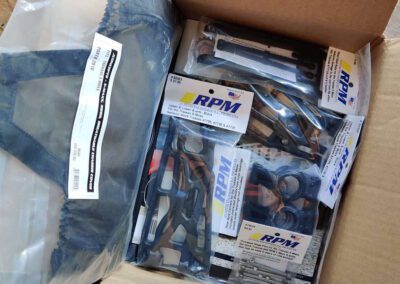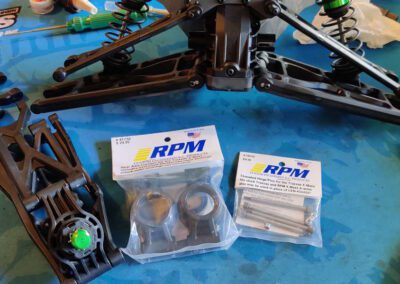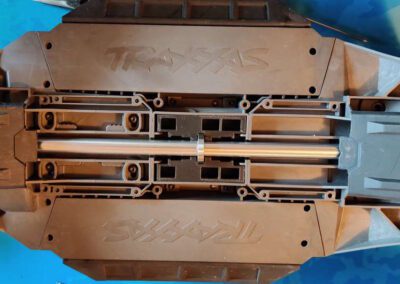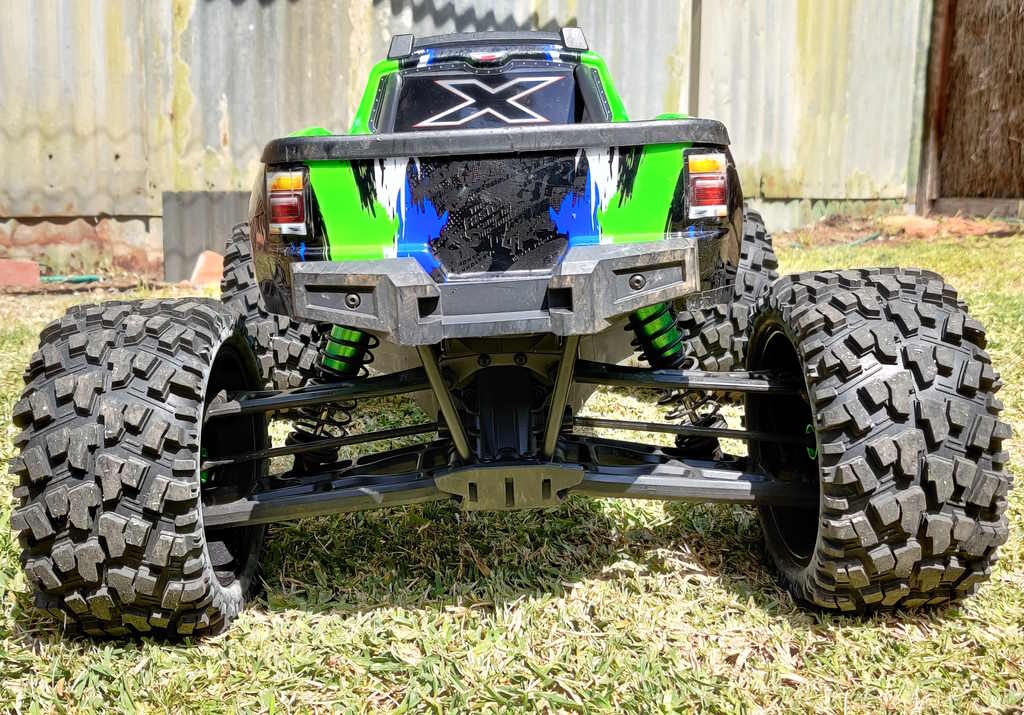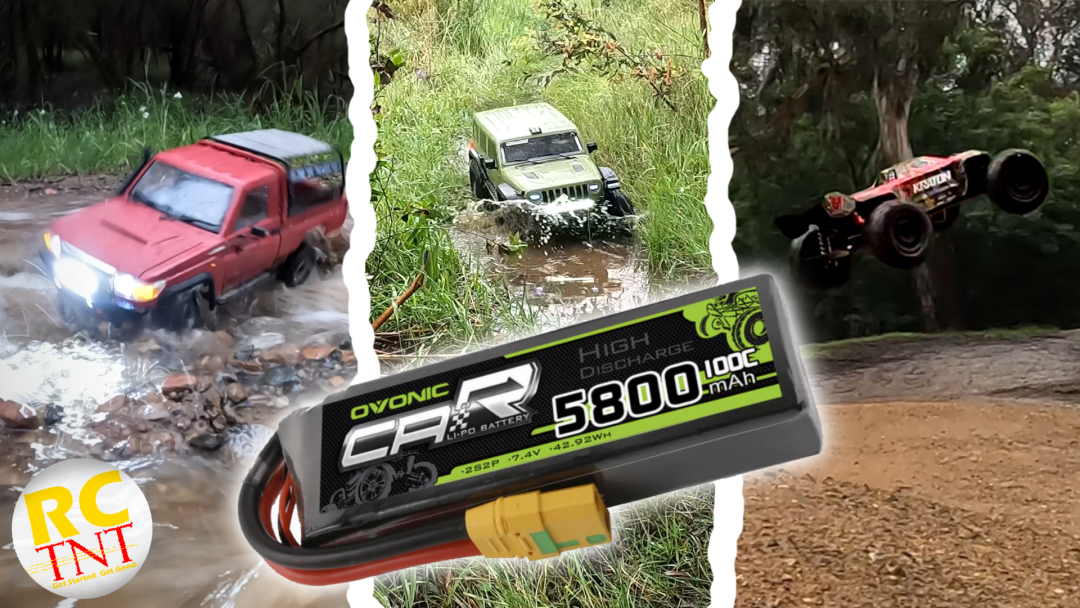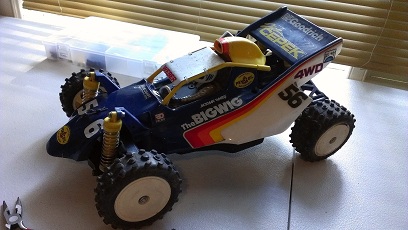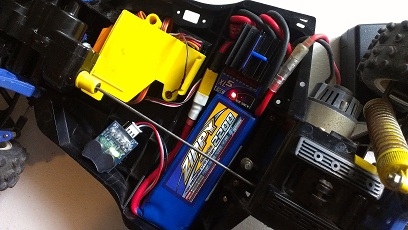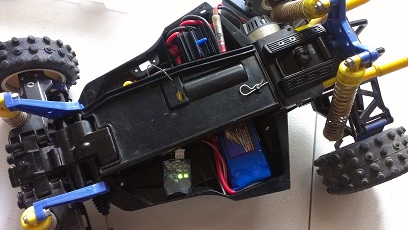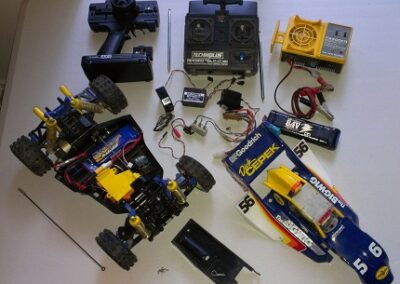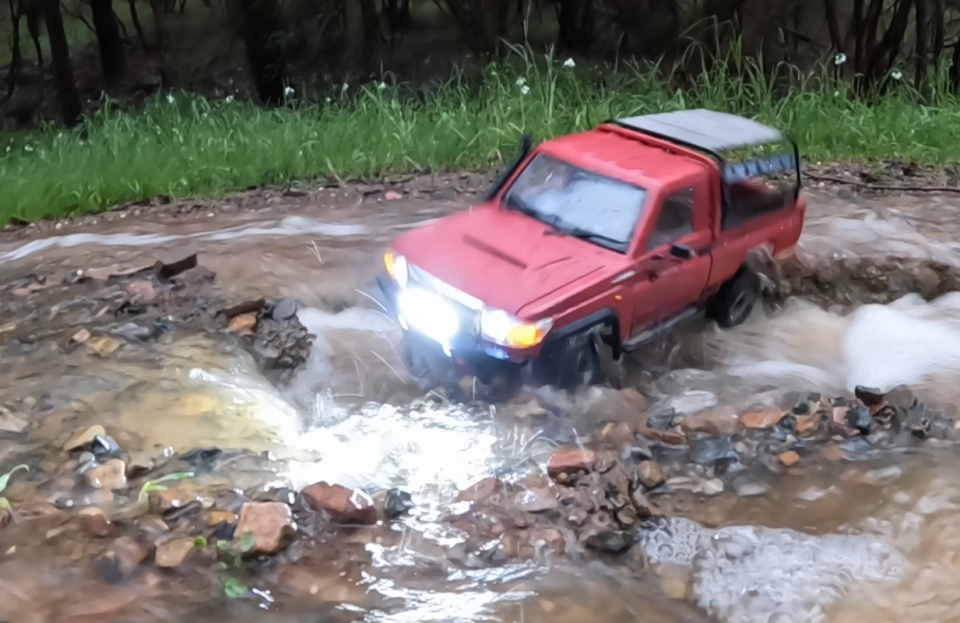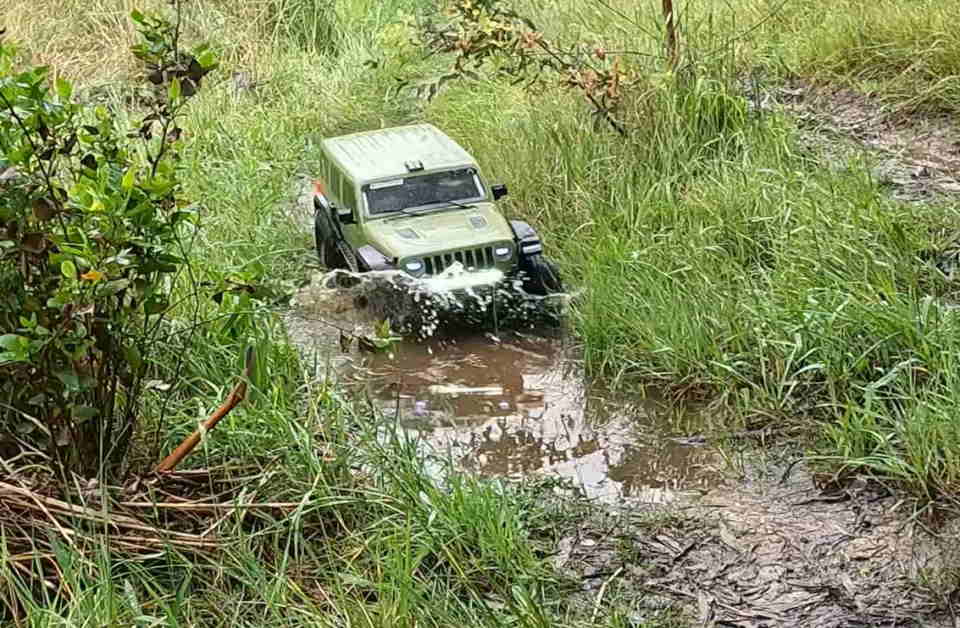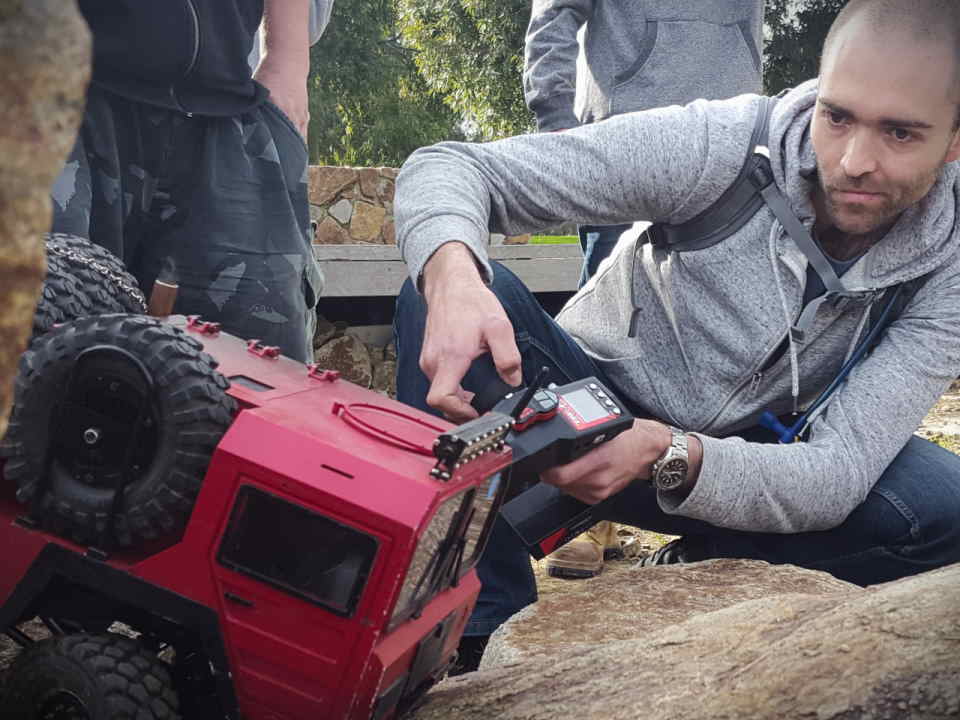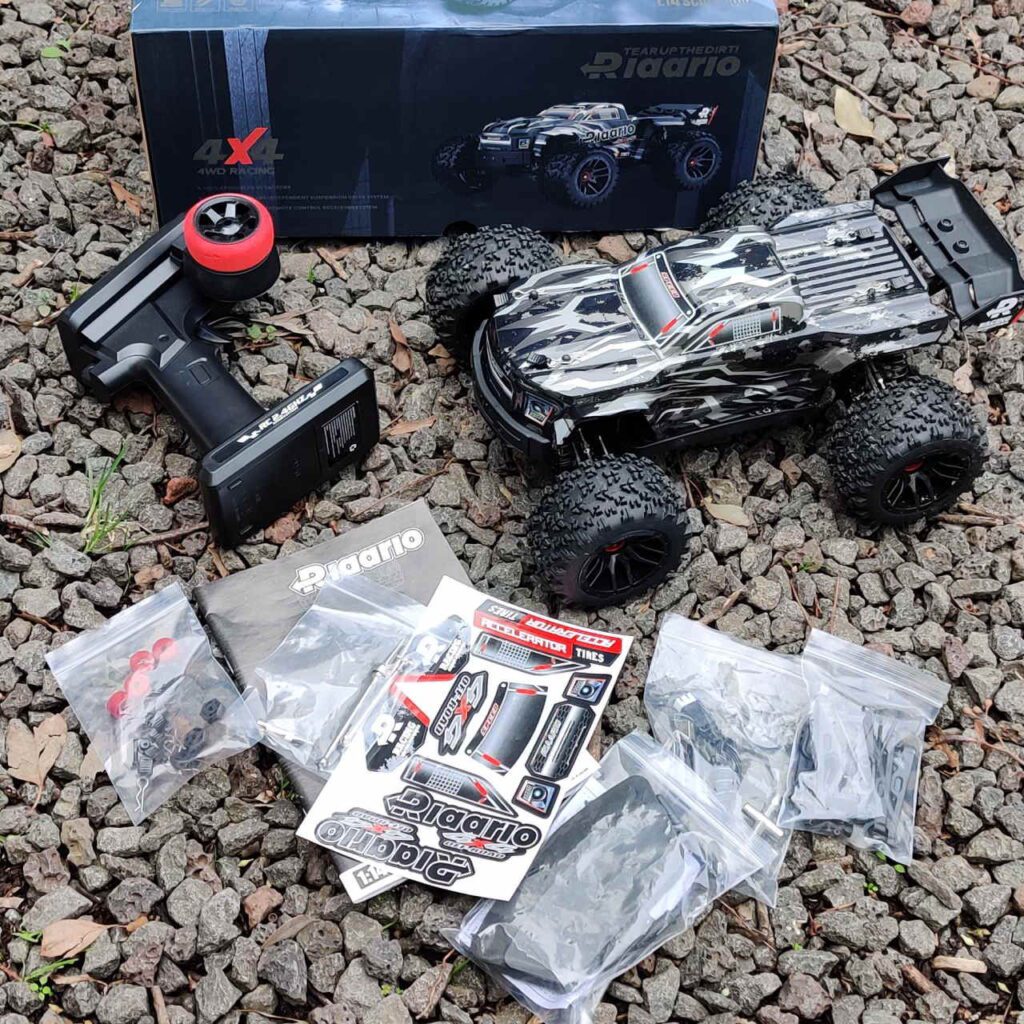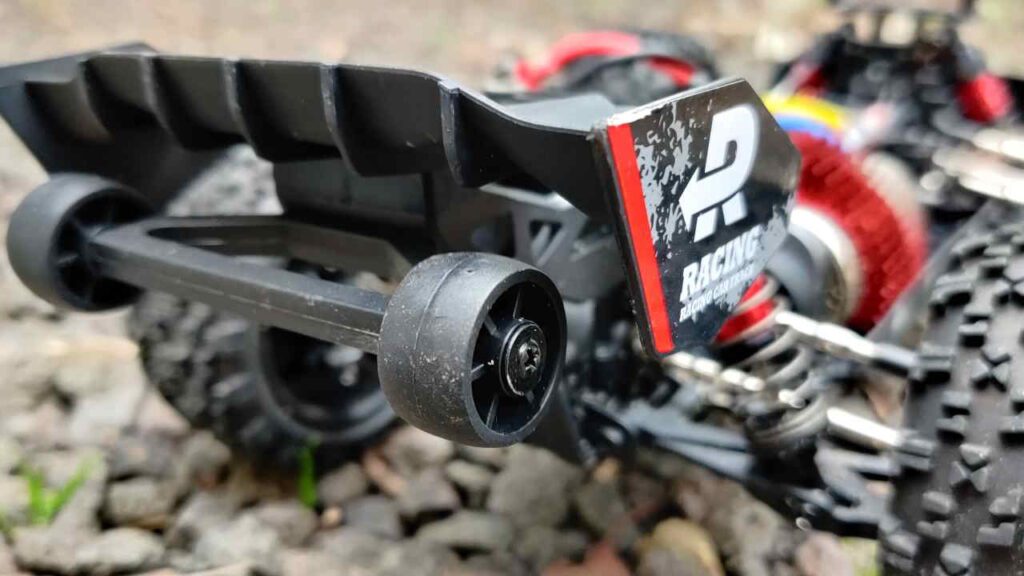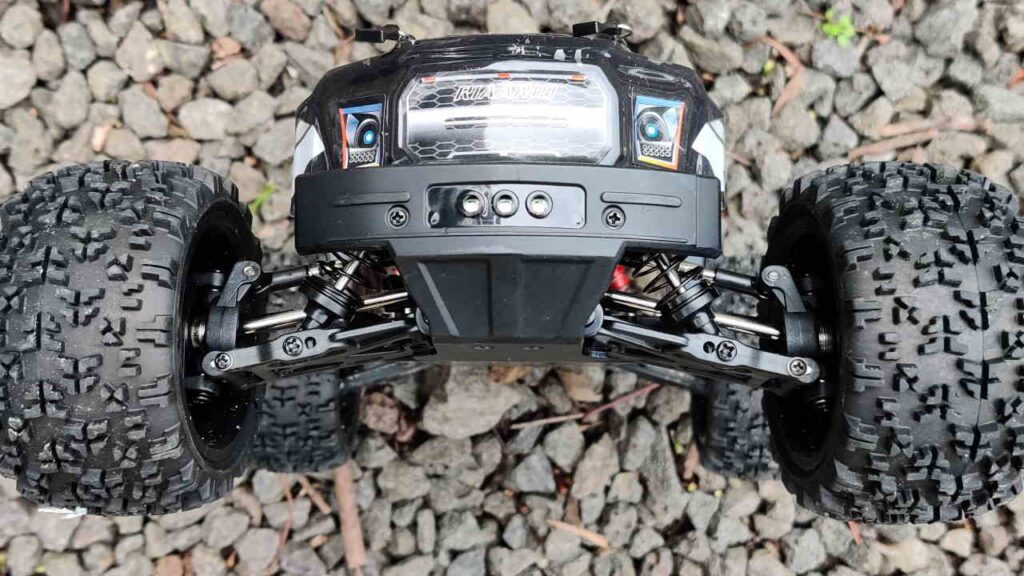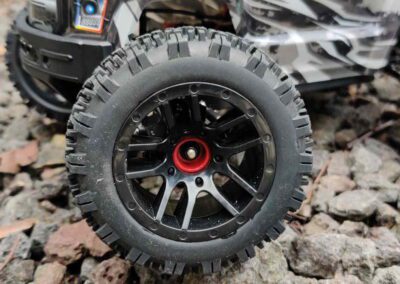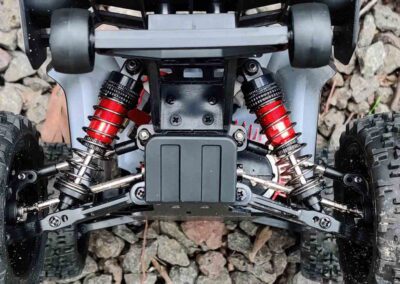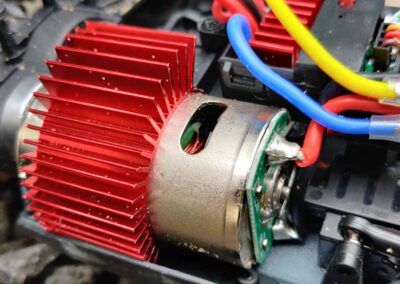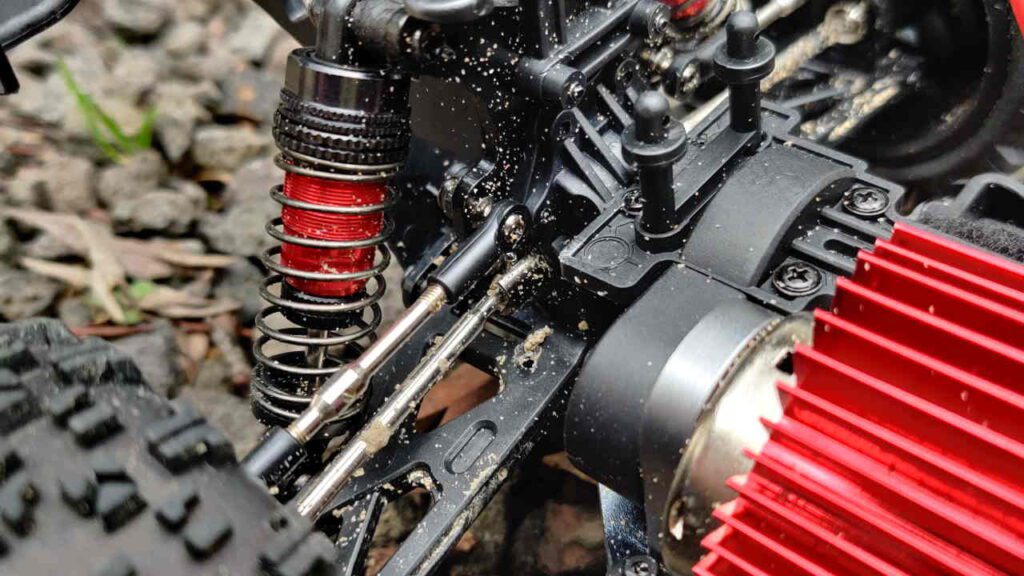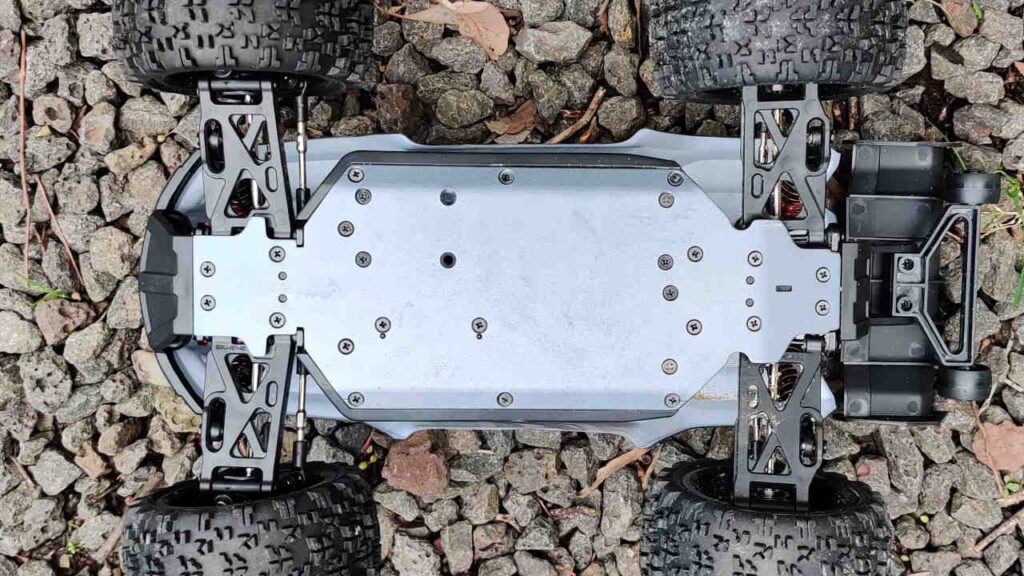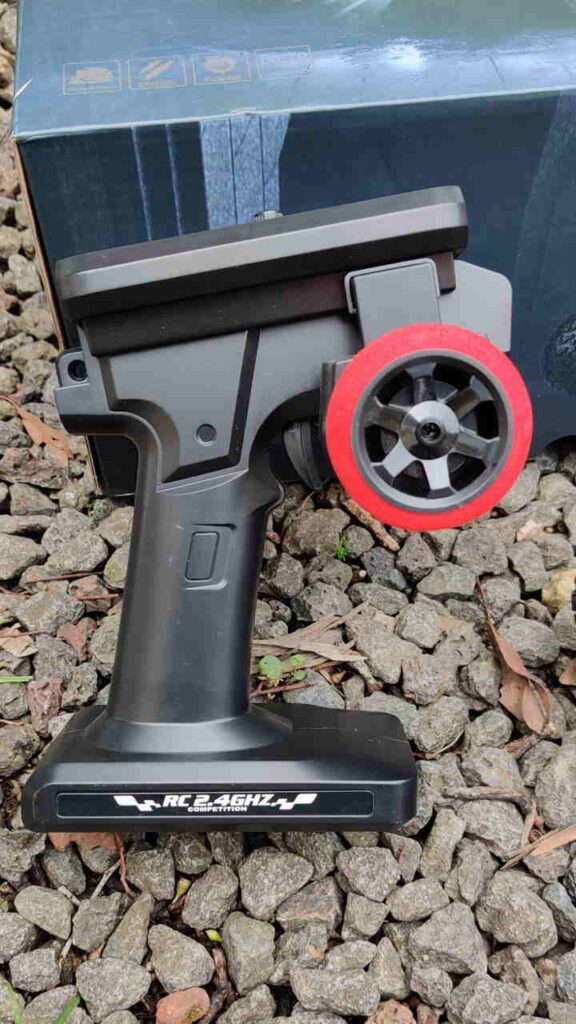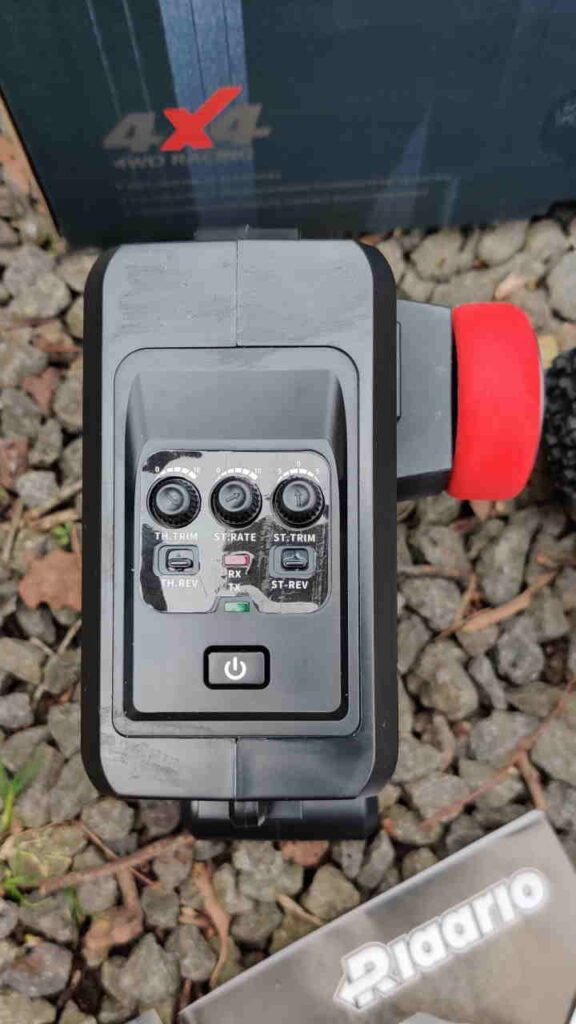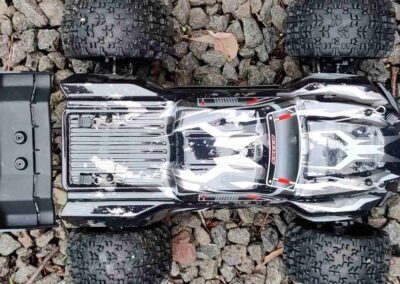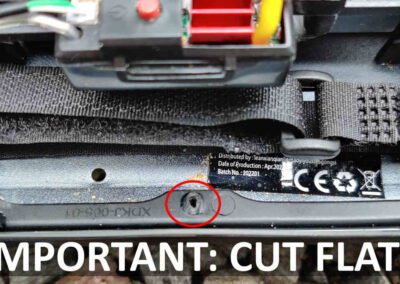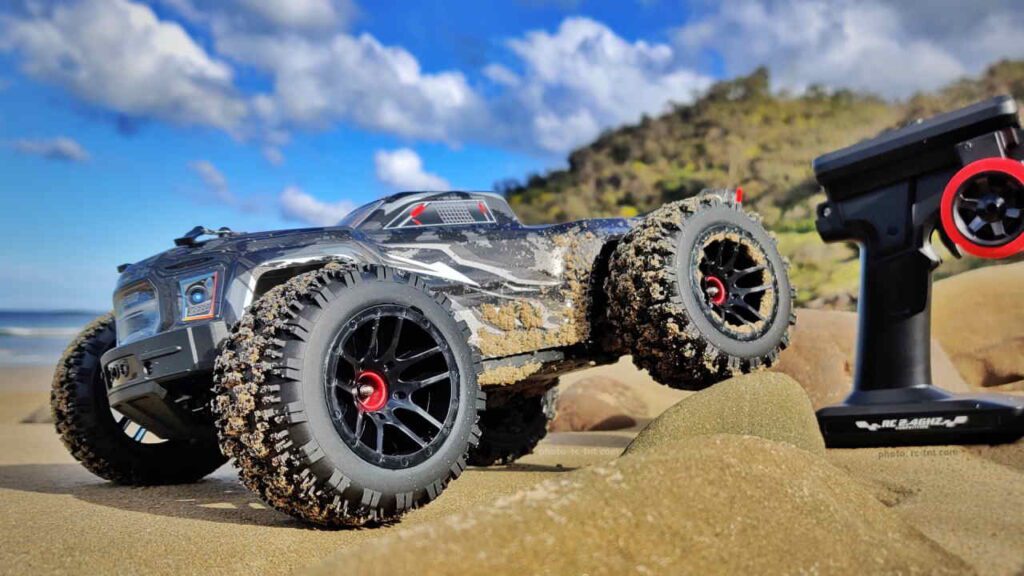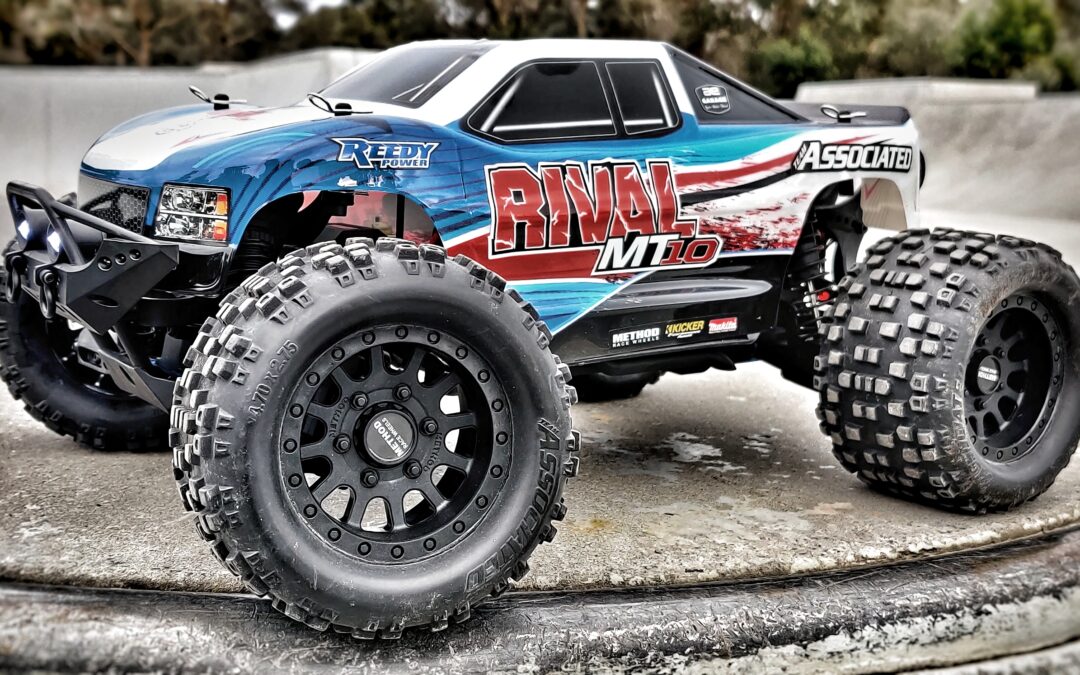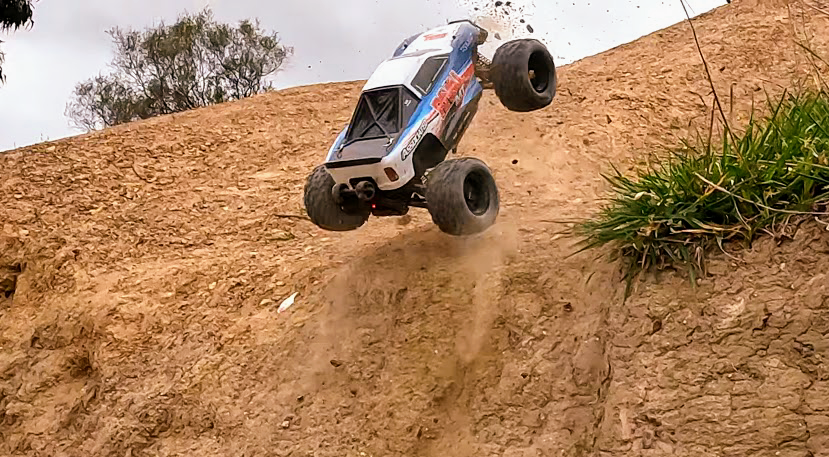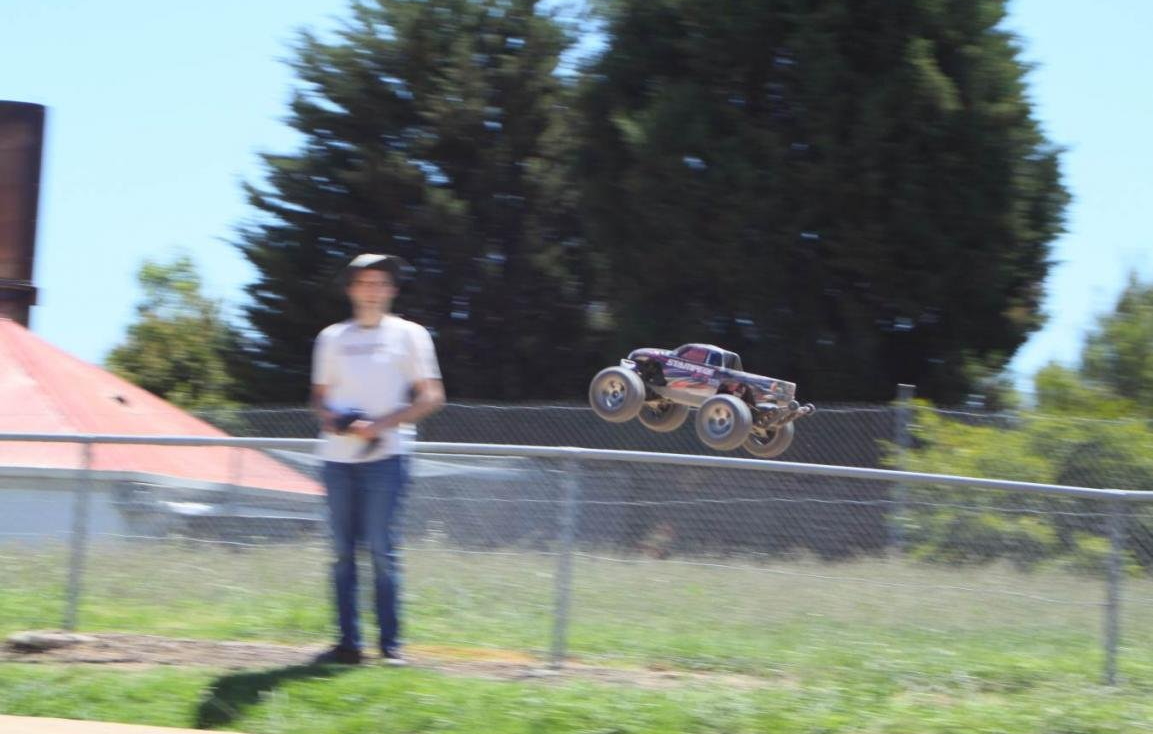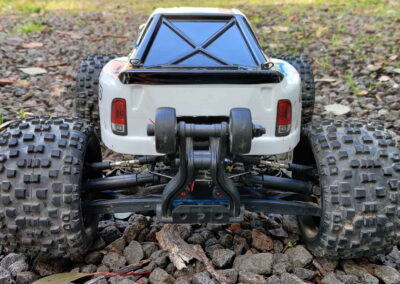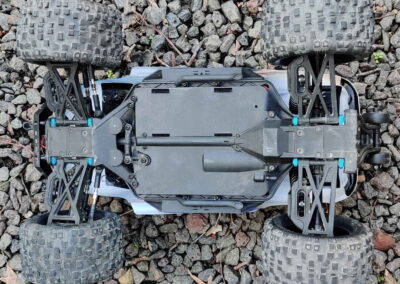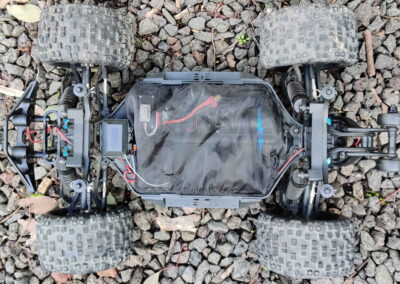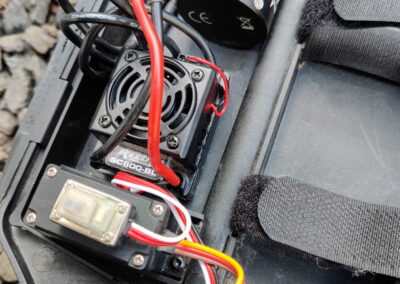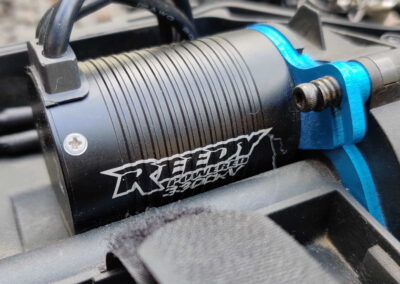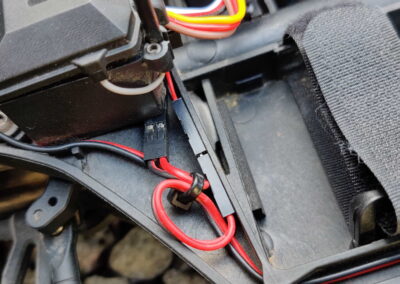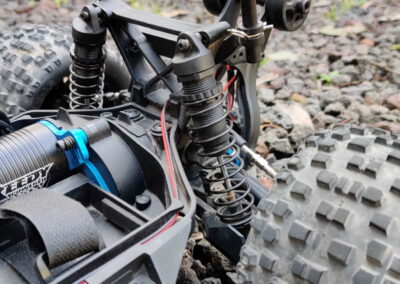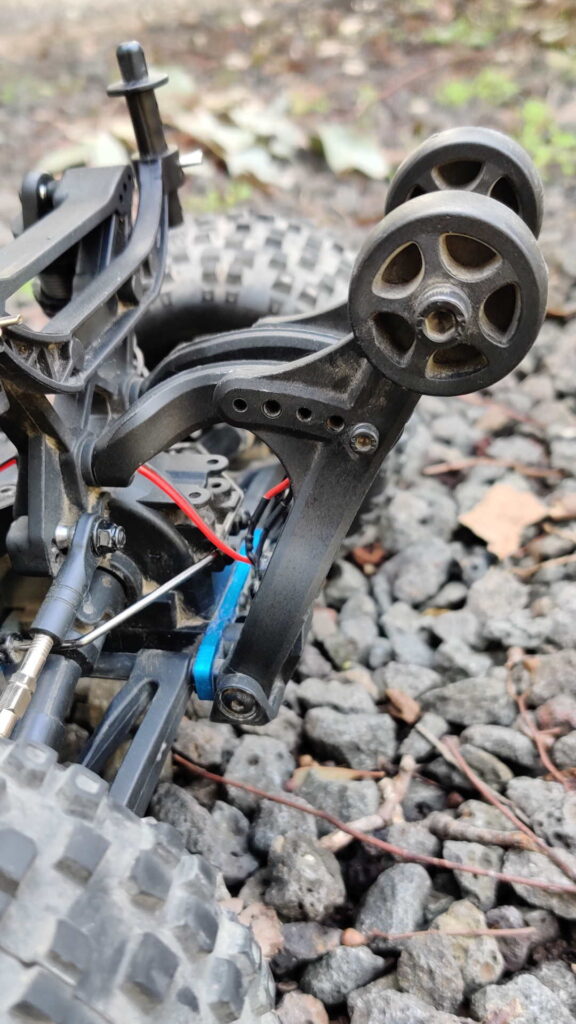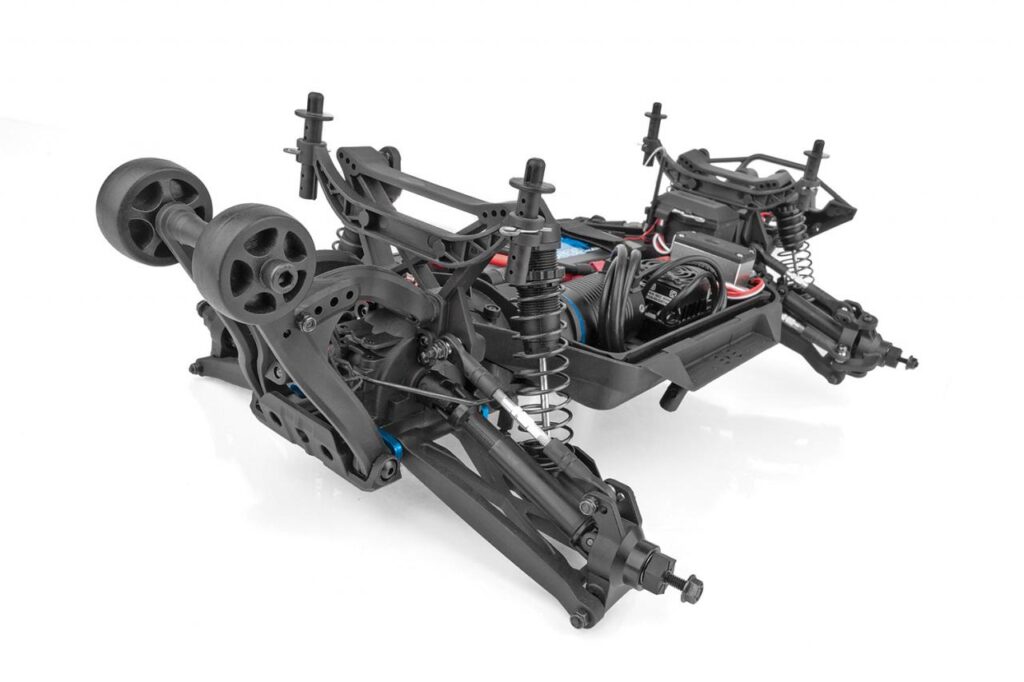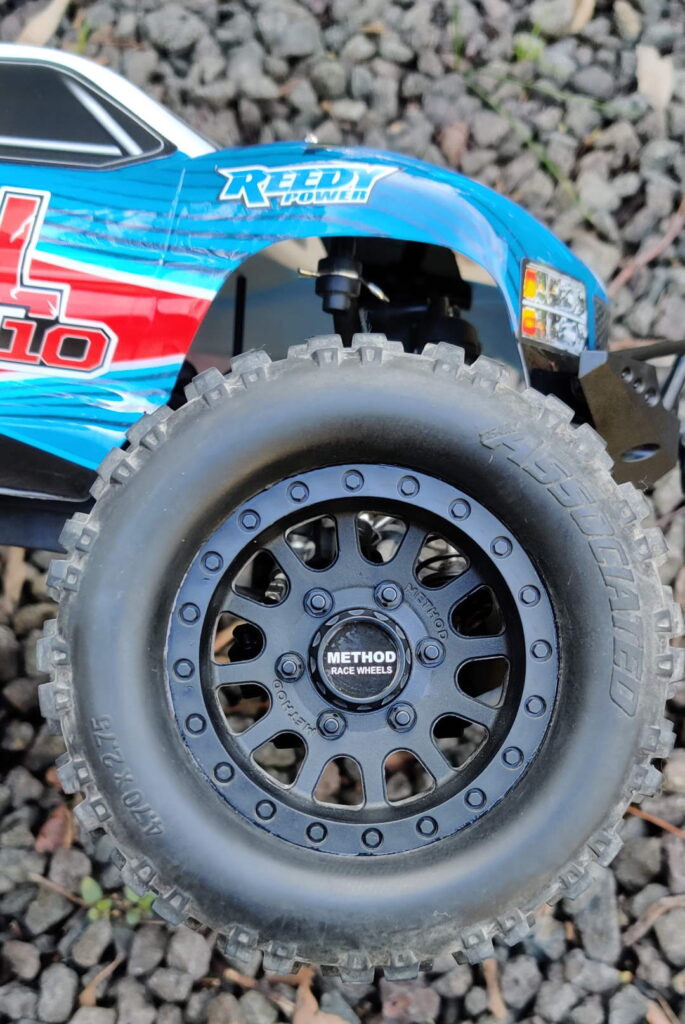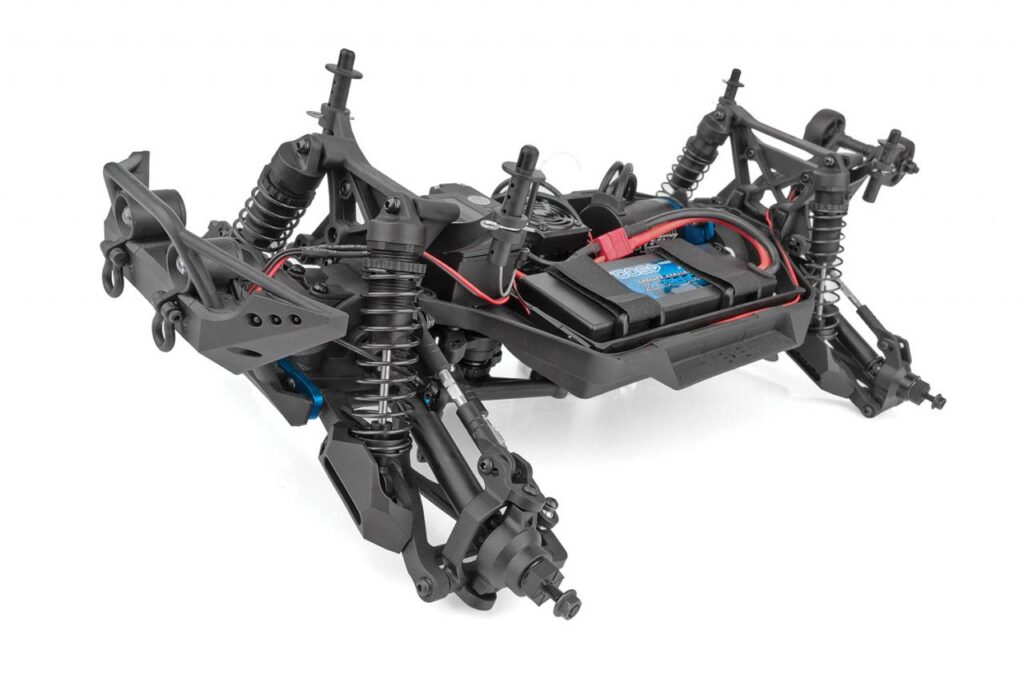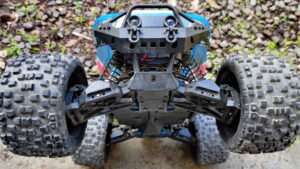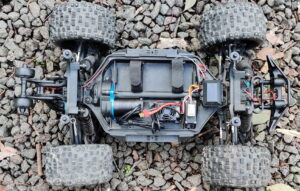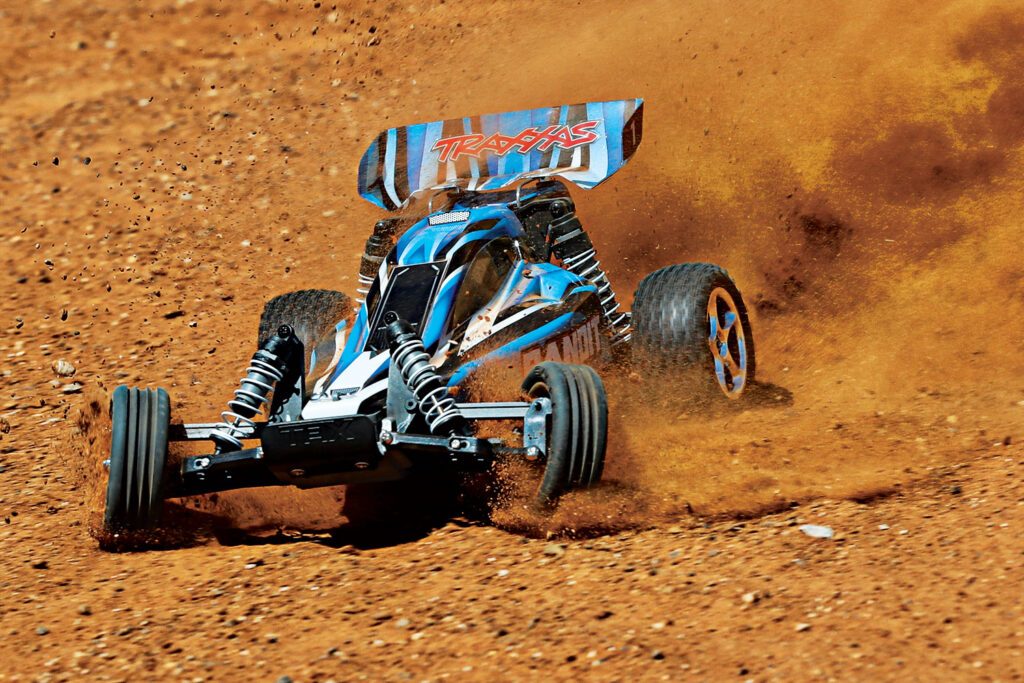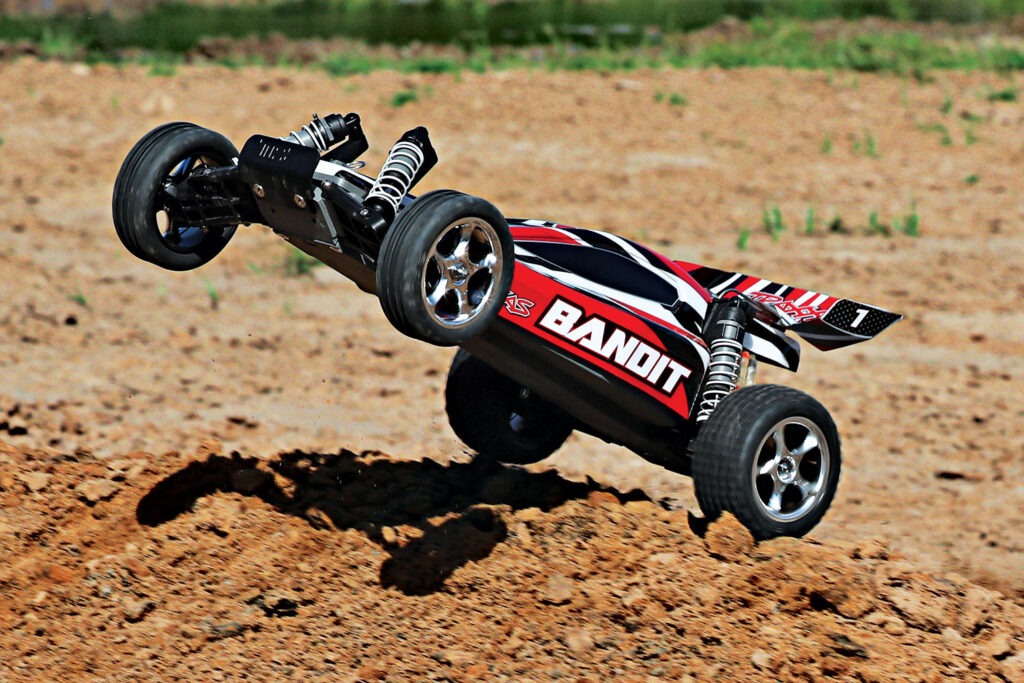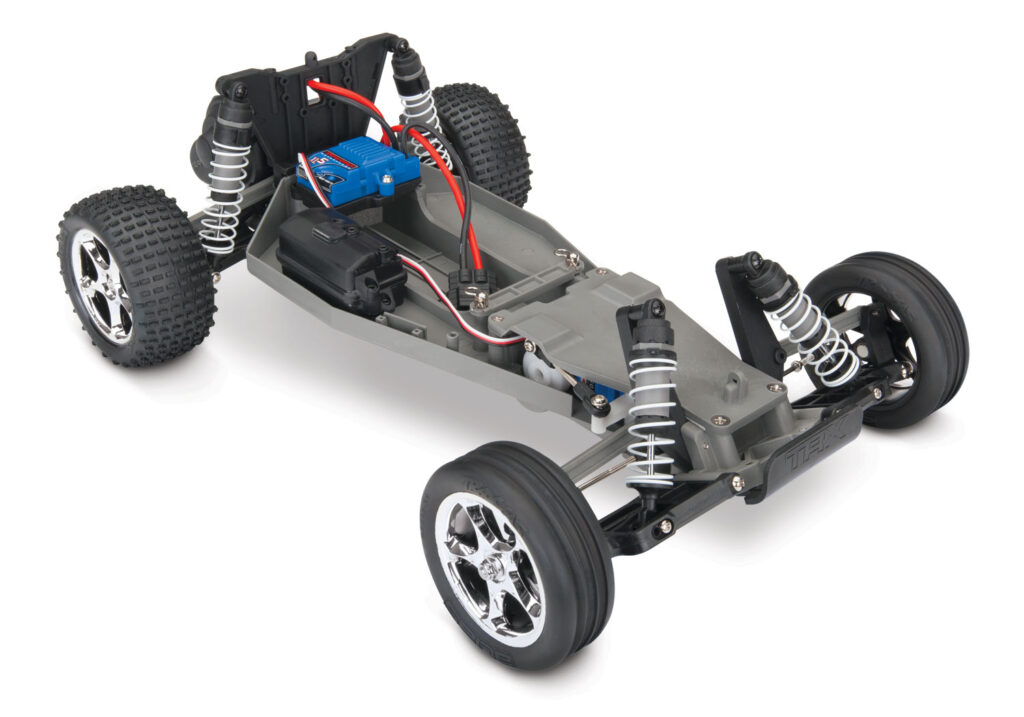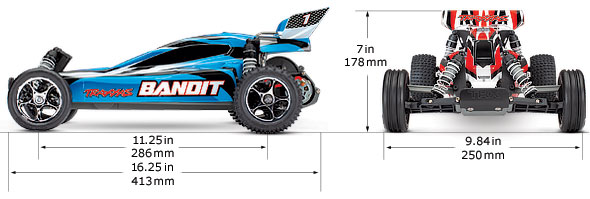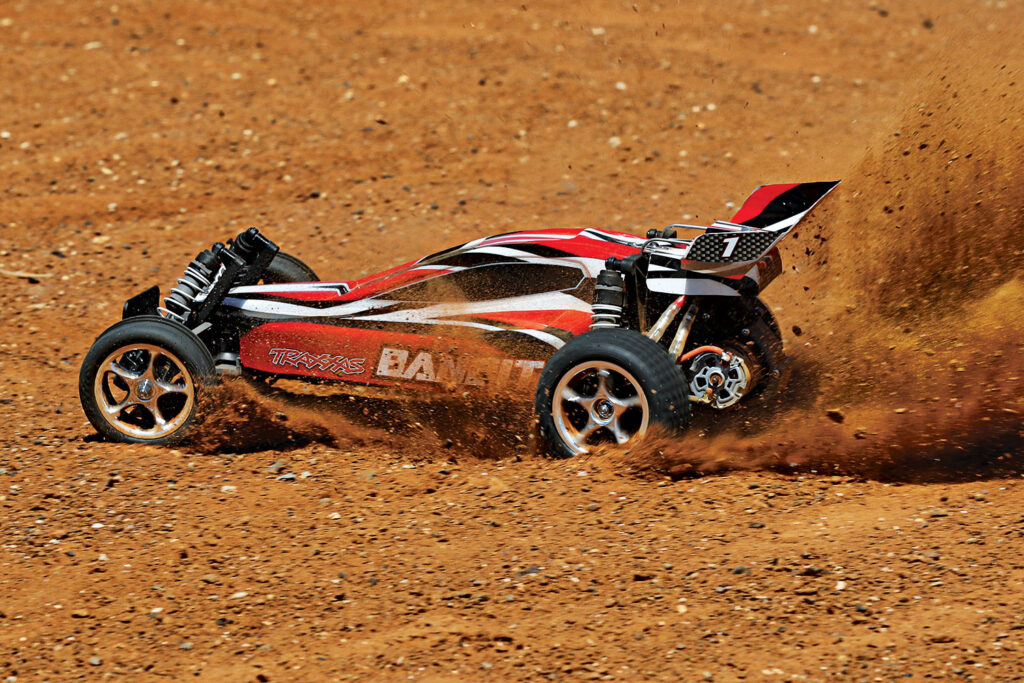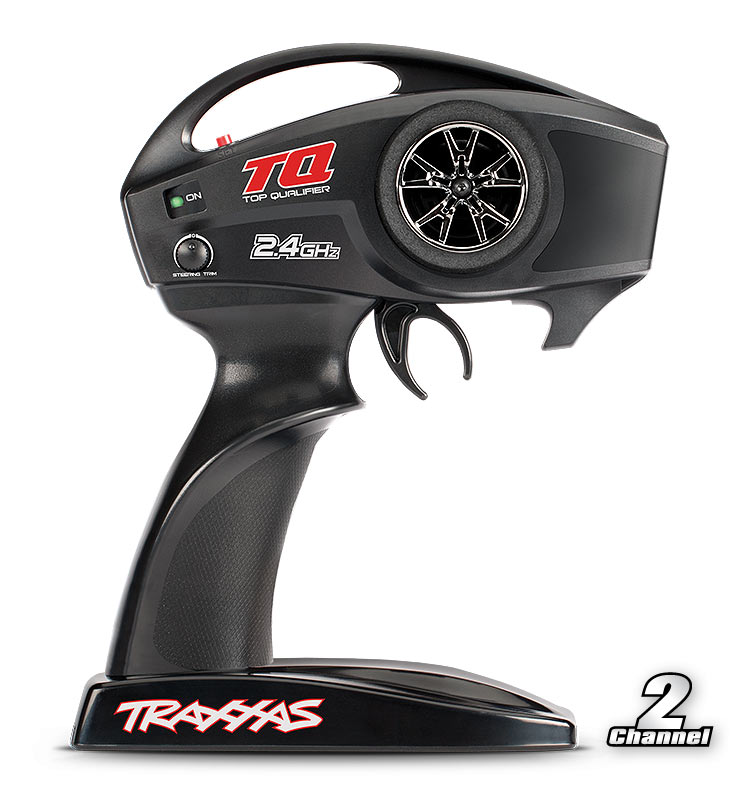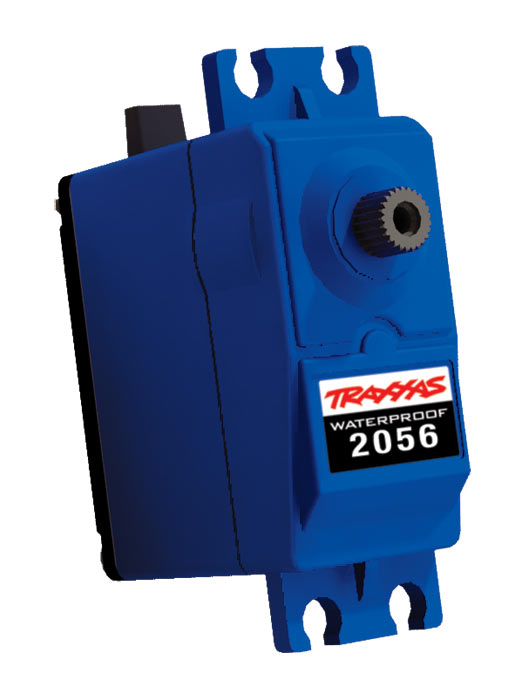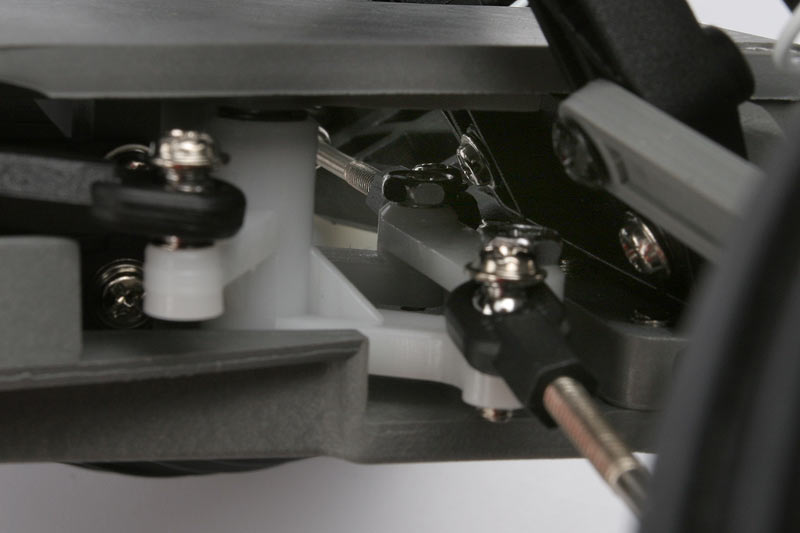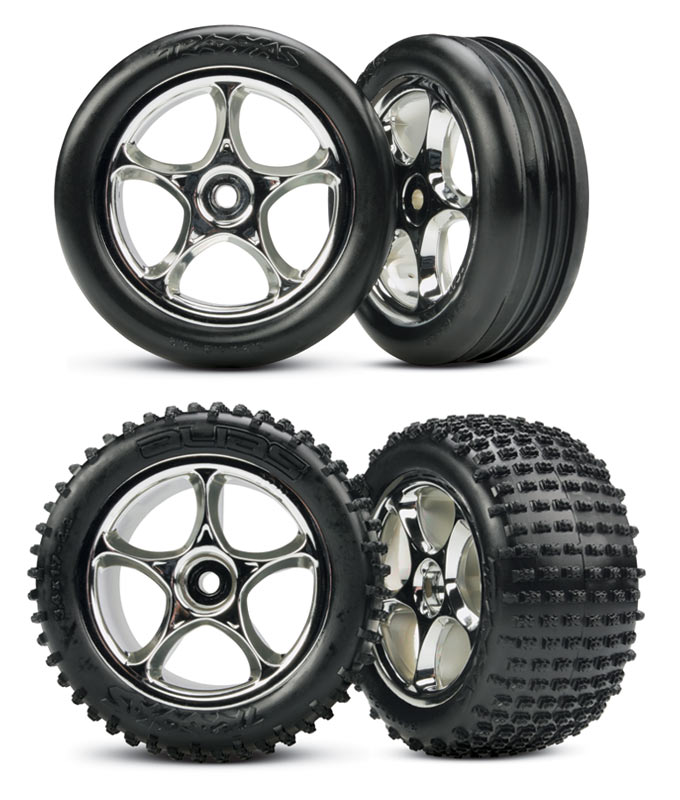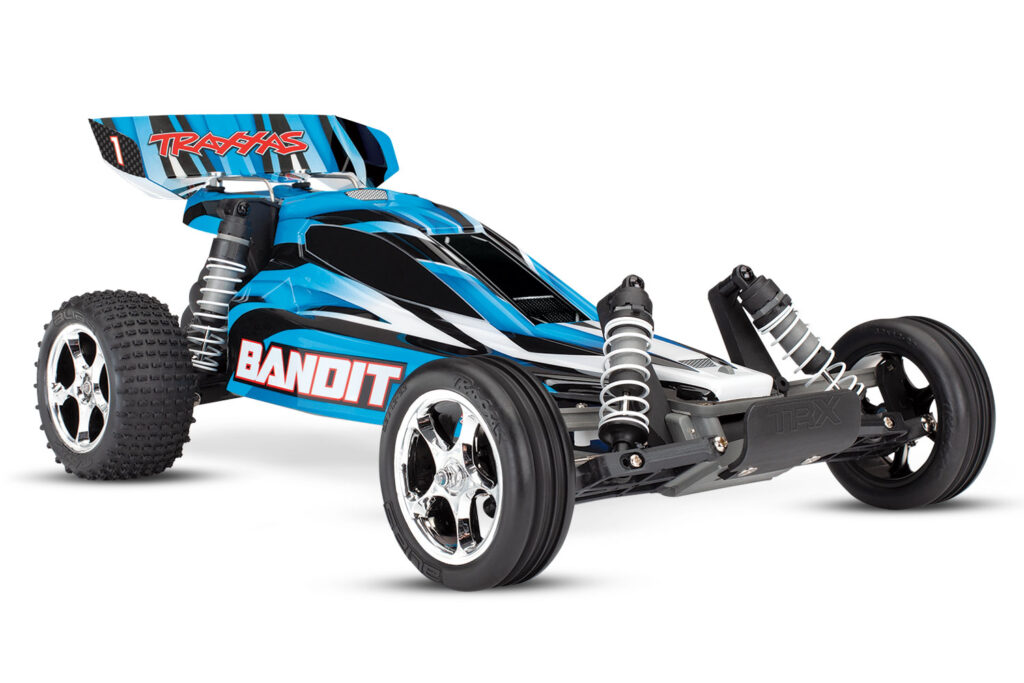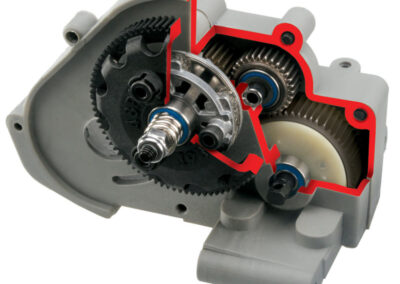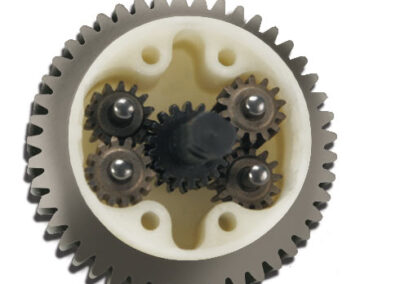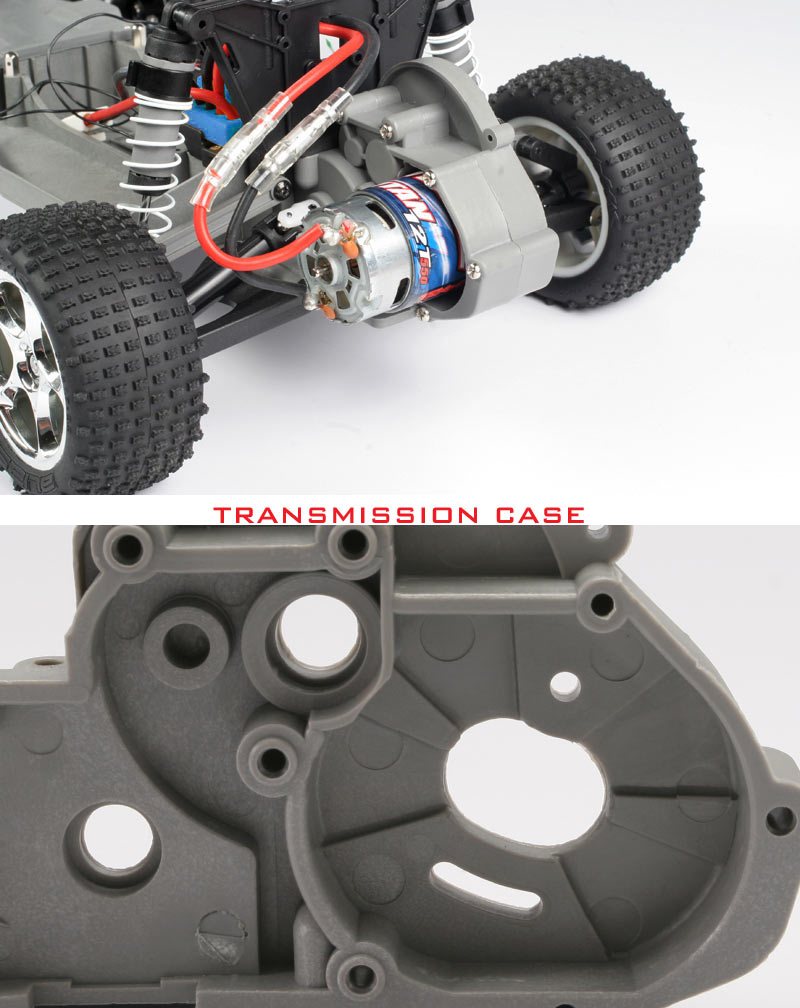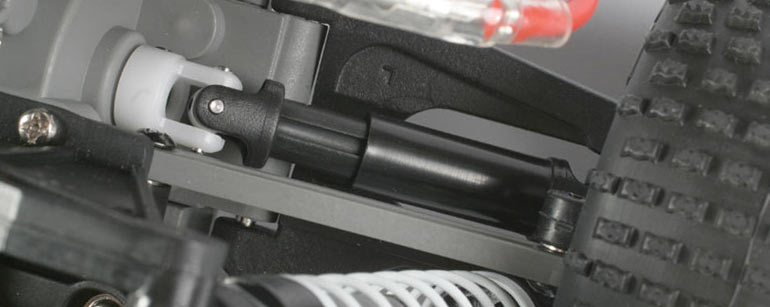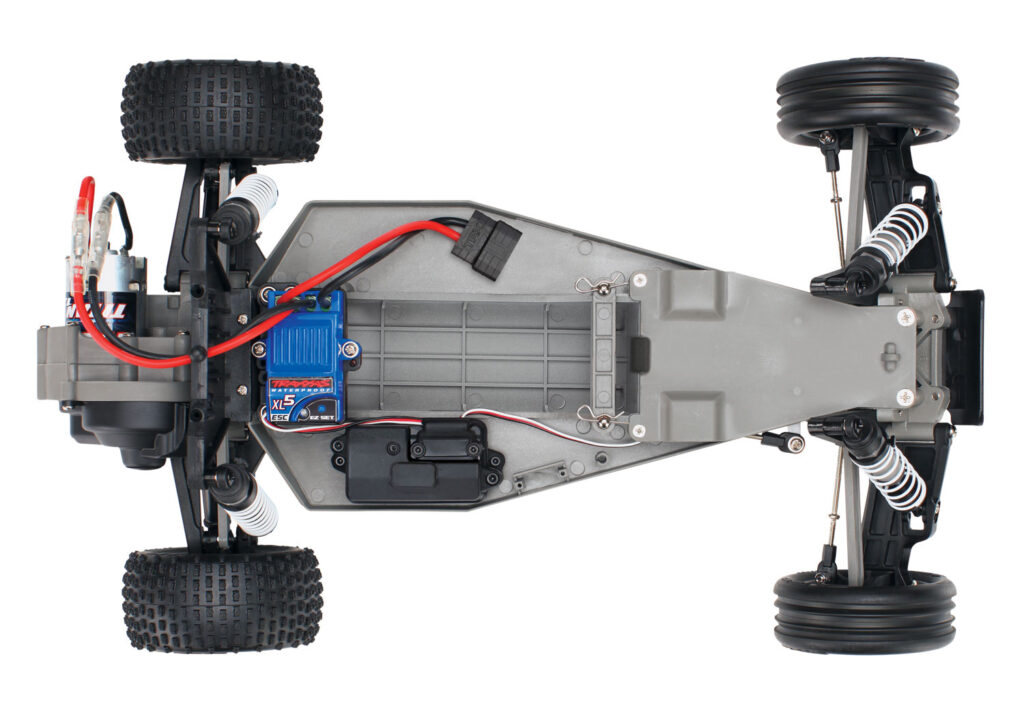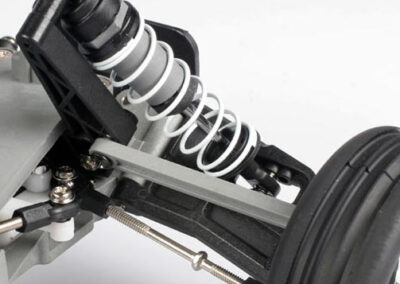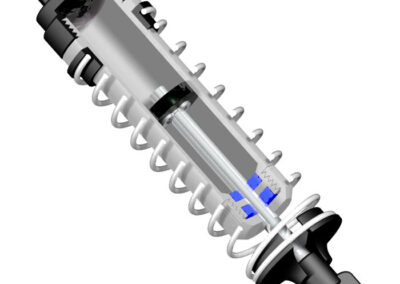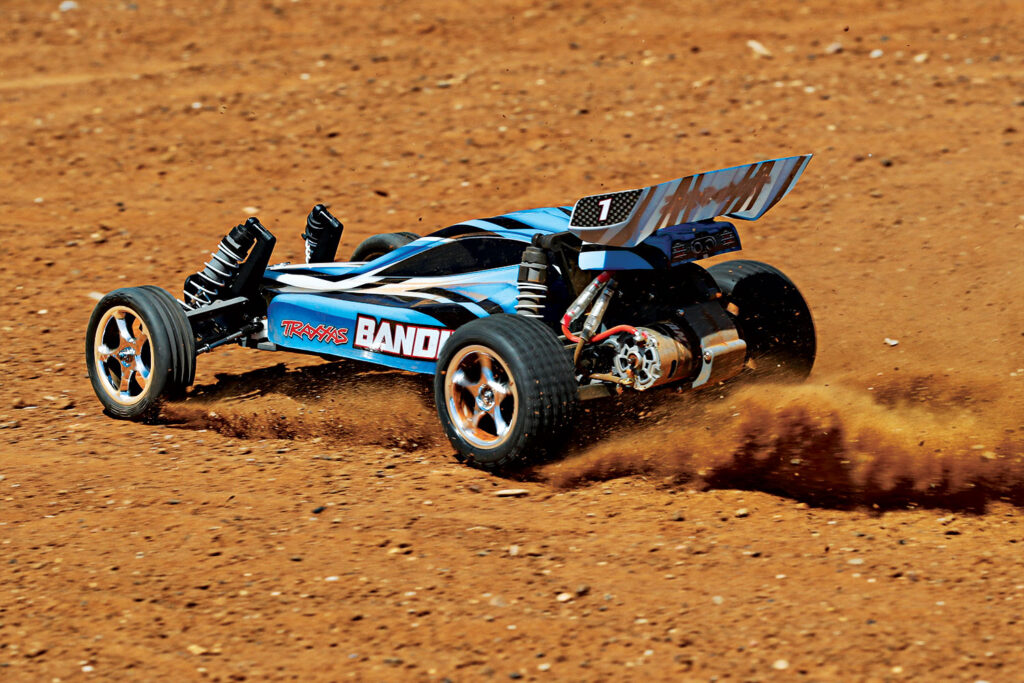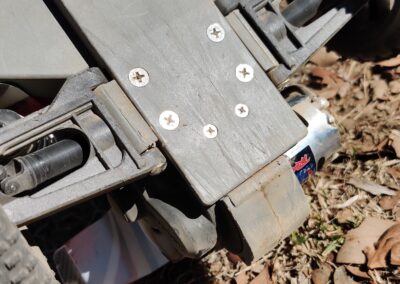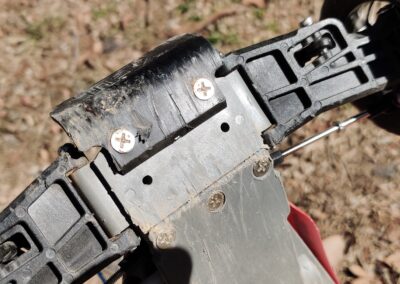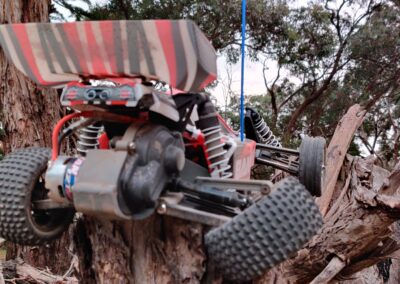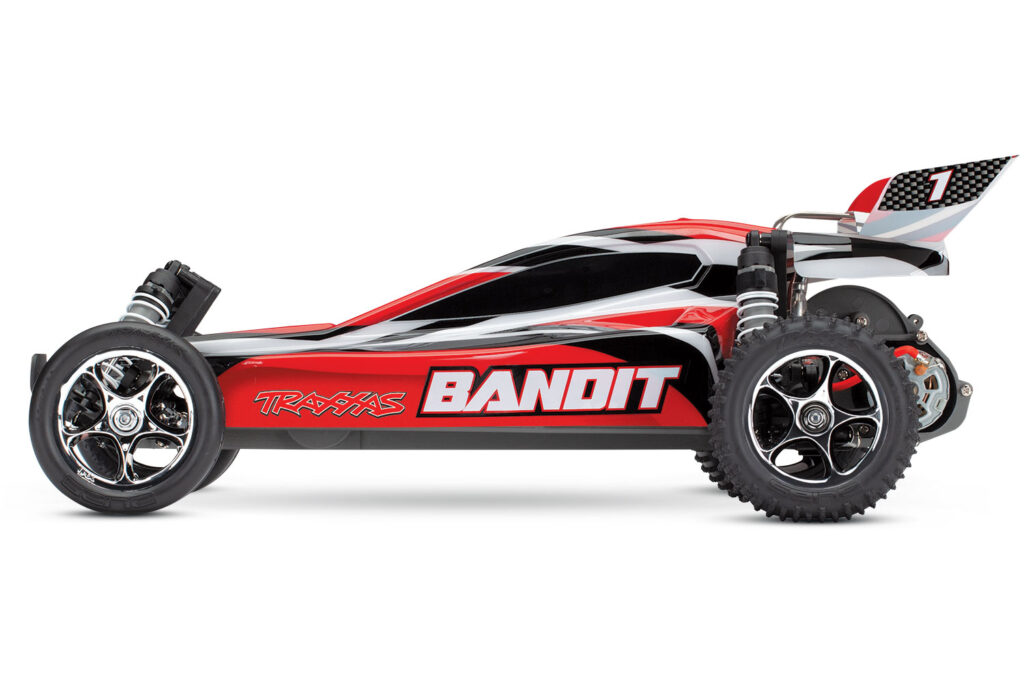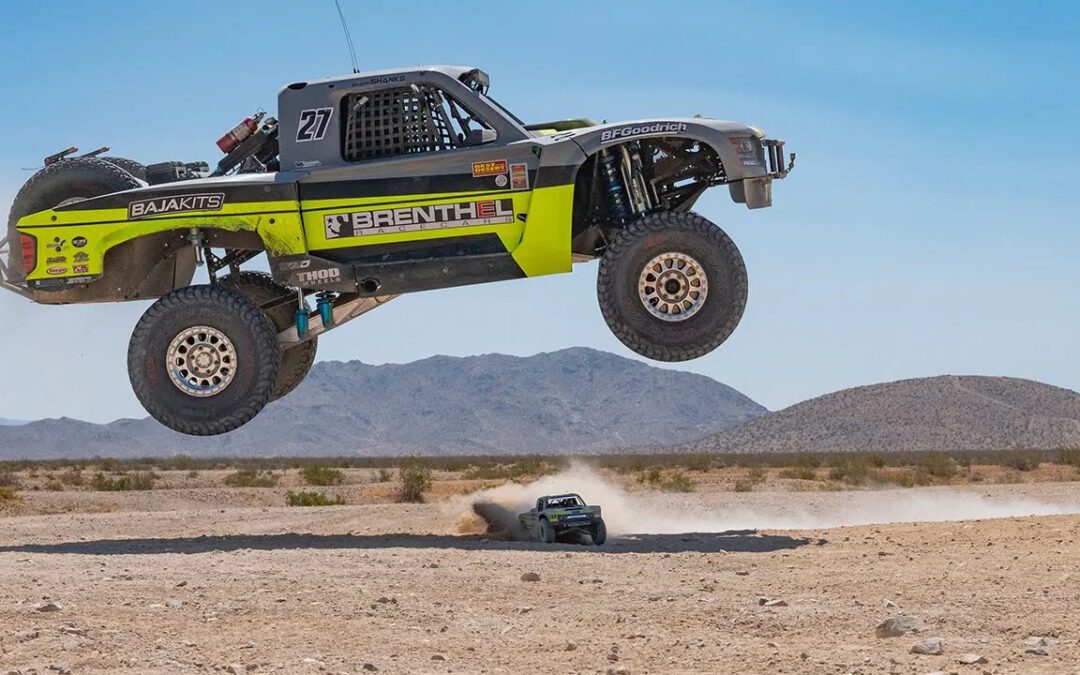
Losi Super Baja Rey 2.0
It’s Huge
The Losi SBR 2.0 is one of the larger RC cars available today (currently on sale here). But it’s also quite different to most of the other 1/7, 1/6 and 1/5 scale fare you can choose. It might be the most unique offering in this scale, now I think about it. Consider: if you want to bash hard, you buy an X-Maxx, Outcast 8S or Kraton 8S. If you want to crawl or trail drive, the SCX6 has you covered. Large scale race track nearby? Get yourself a Losi 5IVE-T 2.0 or a DBXL and have at it. HPI’s Baja 5B has you sorted for big buggy action.
But what if you want scale desert truck driving? Humungous suspension travel, the kind of cornering that only a live rear axle can deliver? Something to match the Traxxas UDR favored by so many? But… bigger and more aggressive? Losi has you covered with the Super Baja Rey 2.0. Let me show you what makes this enormous monster so special.
Losi SBR 2.0
This is a 1/6 scale desert truck. I didn’t have the original one, so I can’t give you a side-by-side comparison, but Losi says this one is built on the Super Rock Rey chassis, but with an extra inch of wheelbase length. They’ve combined it with the front of the Super Baja Rey and there you go, SBR 2.0.
It’s a four-wheel drive vehicle that is engineered to be tough – but of course, with the live rear axle, it will take the right driving approach to keep the wheels on the ground. This style of vehicle is made to soak up big bumps at high speeds. While they can slide and corner reasonably well, this will never be a basher to replace the likes of the Arrma Senton 6S or similar, with its independent front and rear suspension. I guess you could say that RC desert trucks – the SBR here, the BR2.0, Traxxas UDR and so on – are all about the scale drive.

Body Issues
I’ll start with something that was a bit of a let-down. It’s only minor, but this isn’t a cheap model and so you expect the thing to be pristine out of the box. For this design, Losi elected to use something like vinyl wrap for the livery. Mine was a little worse for wear, with cracks in the decals around folds and edges. Some sheets were even misaligned. Screws were oxidized and there’s dust under the light bar lenses.
To be fair to Losi, this is surely a challenging model to assemble. Even in a production-line style setup, I expect it would take considerable effort to get something like this together without mistakes. But to find so many minor issues with my unit does make me wonder about quality control. Is it only the body I should be concerned about here, or will there be missing grease in diffs or a critical screw not secured completely?
Still Gorgeous Tho
The issues I had with this thing are only skin deep, as far as I can tell. At time of writing, I haven’t run the car yet, so if there are underlying mechanical oversights, I’ll edit this section later to let you know. But if you’re not looking closely, those misaligned panels and livery sheet cracks are not obvious. It’s all forgivable when you step back and take the thing in. This is a machine of beauty.
Radio System
Cars rarely came with radio systems in decades past. However, relative to RTR (Ready To Run) sales, kit builds are a lot less popular than they used to be. Many hobbyists may still prefer a kit (including me), but it isn’t what sells. Instead, manufacturers are typically now releasing models with everything assembled and included. The included radios with RTR systems have been hit and miss, maybe more on the ‘miss’ side for some time.
Horizon Hobbies has several big brands under its umbrella at this point. This includes the Losi vehicle here, but notably, also Spektrum. This is why you’ll get a Spektrum radio and power system with most Horizon-brand RTR models these days (Arrma, Losi, Axial, and so on). While the common and more basic Spektrum SLT3 system is fine, the better one is the Spektrum DX3 with 6100AT AVC receiver – and that’s what comes with the Losi Super Baja Rey 2.0.
I like this system in particular because of two dials that make it so much easier to use than so many others. The first is an adjustable braking dial – turn it up for more aggressive braking. The second is a stability control dial, or steering gyro – turn that up to have the car counter-steer more responsively to keep the nose pointed forward. In a car like this, I’d suggest the former is quite important and the latter is probably best left turned mostly down. Experiment and see; it’s so easy to adjust on this radio. I’m a fan! (The marks and dust are because Metro Hobbies sent me a floor model without telling me. Disappointing, but not a big deal).
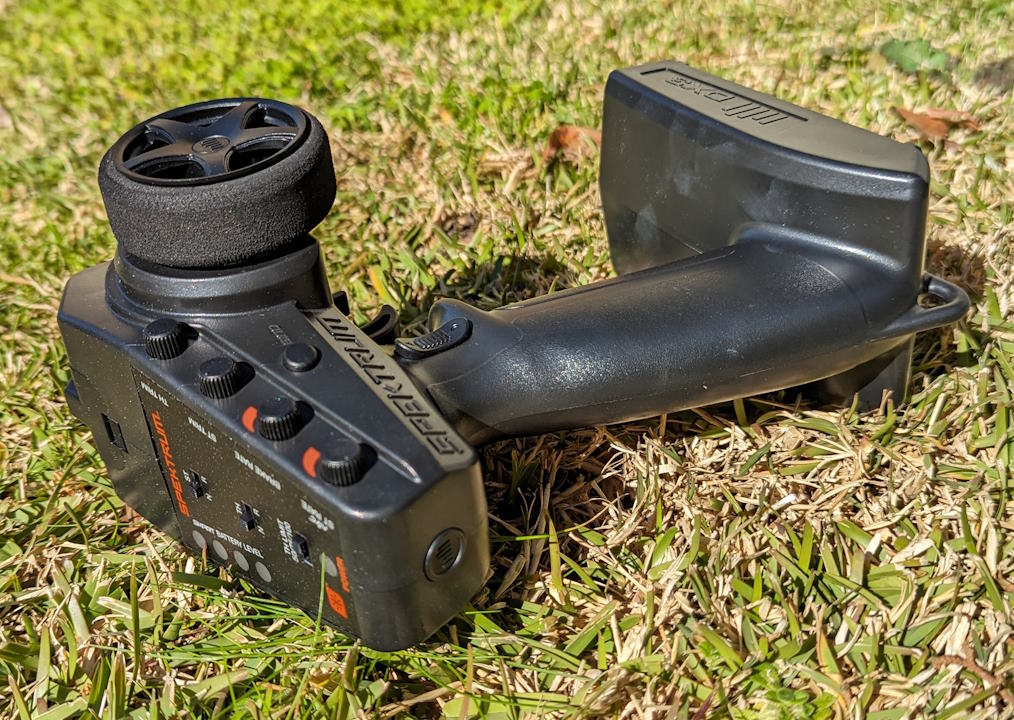
The Main Thing
This is what we’re here for: that epic, desert truck suspension and live rear axle. Check these pictures out! Look at how much range there is, especially over the rear axle. It’s plush, heavy-duty and epic. Of course, the rear suspension is mounted on trailing arms, and everything about the arms at both ends is heavy duty and well designed. There are hefty sway bars at each end and it looks great. Even just typing this, I’m wondering how I’ve managed to not drive this car yet. I’m busy, but too busy to drive this car? I’m selling myself on this thing just writing this.
The front end has plenty of travel as well and the body has a pleasing amount of roll. There’s bolstering around the chassis mounts and both ends are adjustable with alu thumb screws. Looks great, too.
Drive Line
Steel universals are found throughout the vehicle’s drive line. The rear shaft is a fibre-infused telescoping unit that attaches to the steel unis at each end. Given the crazy power this car can make (and we should talk about that in a moment, see below), you’d reasonably question if plastic will be up to the job on the rear end, in particular.
Well, there are steel drive shafts available on the after-market for this car, but having discussed this car with other owners, the consensus seems to be that it’s tough enough for the job. Certainly, there’s not a lot of flex in the parts, but rigidity is probably the more important element here. The glass element should be sufficient. We’ll see!
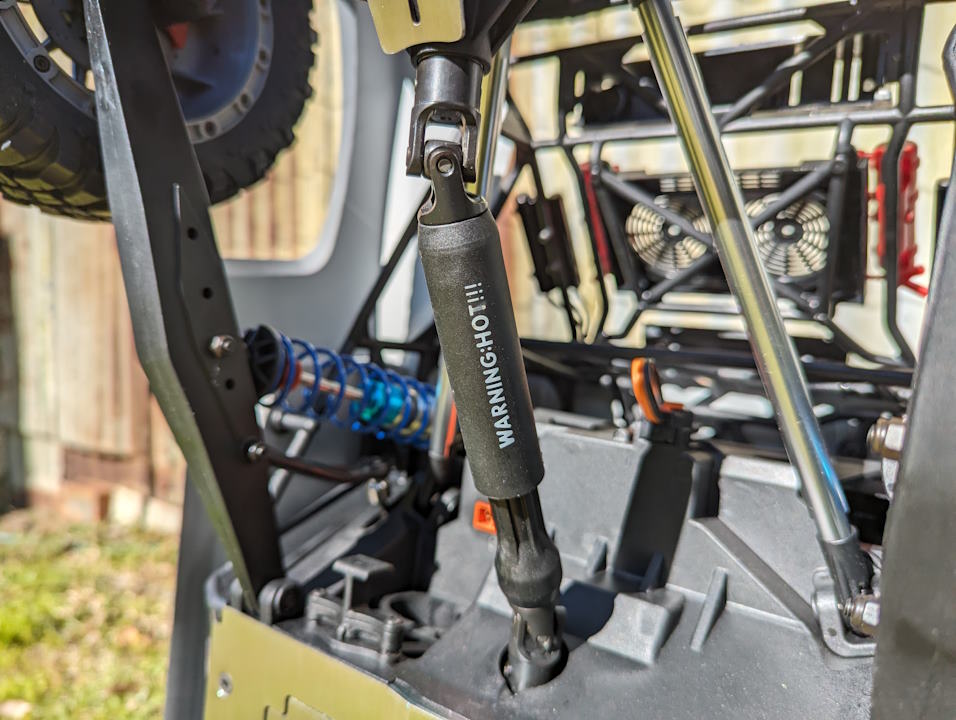
Wheels and Tires
BF Goodrich Mud Terrain T/A KM3 tires are clamped securely in Method Racing beadlock wheels on 17mm hex adapters. Side walls are firm but have some flexibility and the foams are also medium-hard. Of course, there are the two full size, functional spares on the rear of the vehicle, which is part of the magic of this interesting car.
Power System
Bigger numbers don’t necessarily mean bigger speed. With RC power systems, getting the voltage, motor kv (revolutions per volt), and gearing correct can be a balancing act. Typically, larger scale vehicles will run lower kv motors, favouring higher volts to achieve the torque and power required to move a heavy vehicle rapidly.
The SBR 2.0 runs a Spektrum Firma 160A 8S-capable ESC, powering a hefty (no, really) 5687 750kv motor. This is both a huge diameter and lengthy can – this motor is 56mm across and 87mm long.Batteries are loaded from the bottom of the vehicle, also helping to keep the weight low. It has a claimed top speed of around 50mph. Doesn’t that sound kind of uncomfortable! Fun, though!
Losi Super Baja Rey 2.0
How does it drive? Well, I can’t give you that quite yet. I’m looking forward to it, but I’ve been waiting to drive with a Traxxas UDR so we can compare them a bit. I might try to throw in an Arrma Mojave 6S as well, and then we can see which might be the best to get for your purposes. I’ll put that video here, when I make it. I can’t wait!
Read more here and buy your own Losi Super Baja Rey 2.0 here.
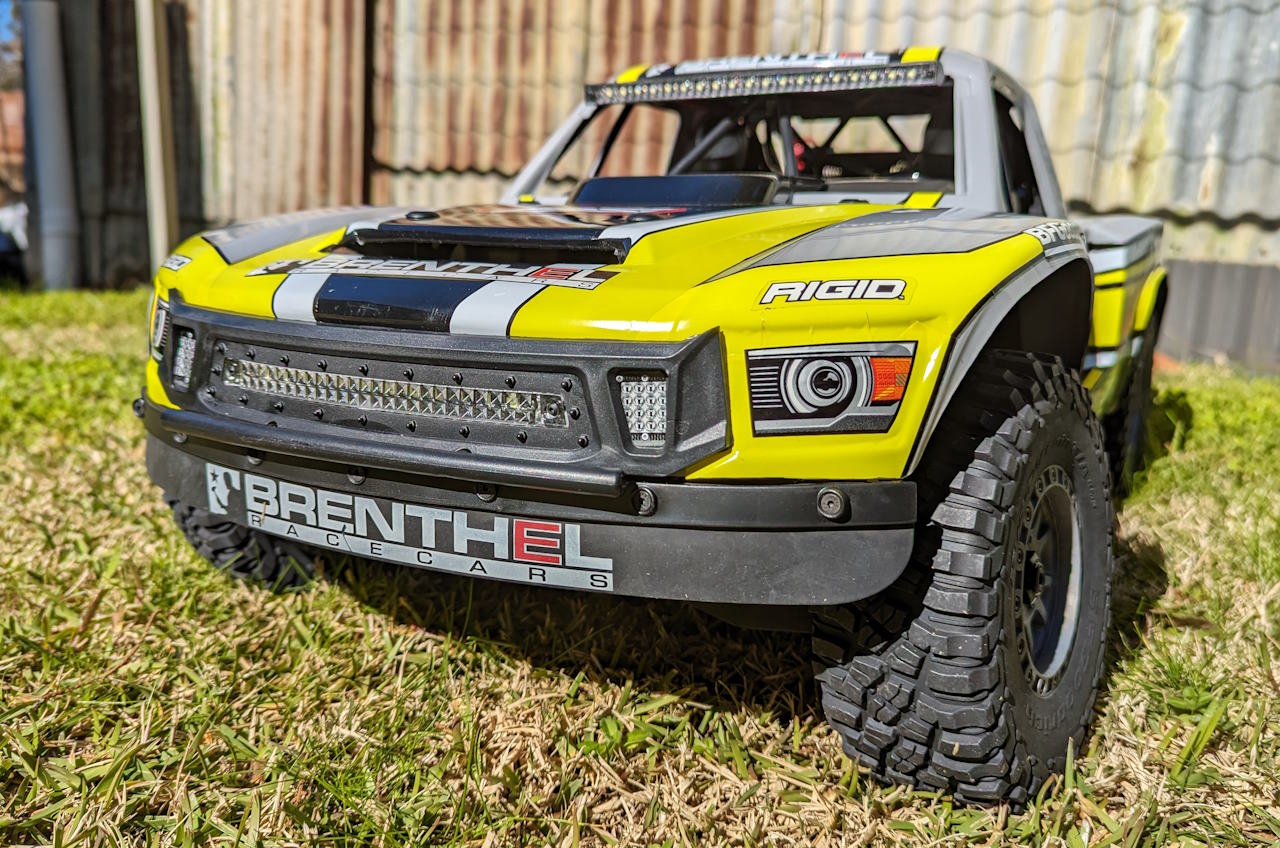
Don’t Miss
Meanwhile, you might be interested in reading about the 10-car roundup we’re doing at the end of 2023 and into early 2024. There are ten short course and desert trucks in 1/10 and 1/8 scale from all the big names and some of the smaller ones. The list includes the new Tekno SCT410 2.0, the Losi Baja Rey 2.0, Arrma Mojave 4S as well as the Senton 3S BLX, and more. Check out the channel for more.

Craig Veness
RC-TNT
Craig has been into radio control since the 90s and into RC crawling since about 2010, when a Losi MRC started the obsession! Now it's all rocks this and crawl that and upgrade all the things! ...You know how it is, right? Welcome home 🙂
A note on affiliate links: the Amazon links in the above article are affiliate links, which means we may be paid a small commission if you choose to click on them to make a purchase. As always, we make effort to ensure that no review is impacted by this – we still report on bugs and issues encountered during product testing, and our fixes or solutions if found. Thank you for reading and happy RC-ing!

